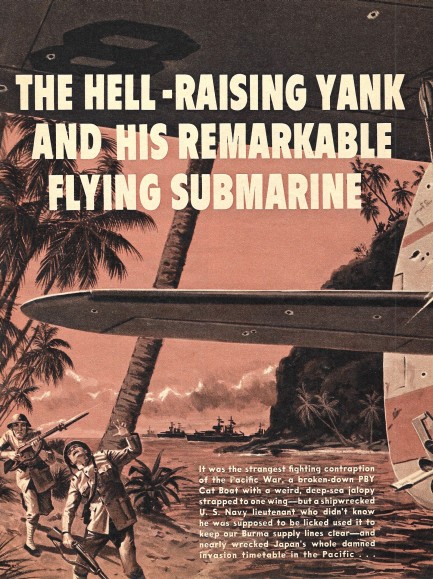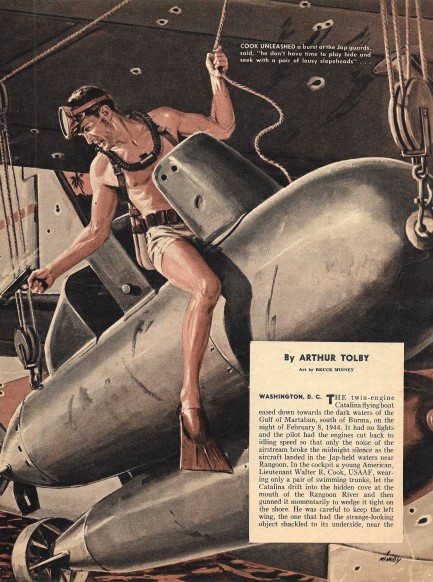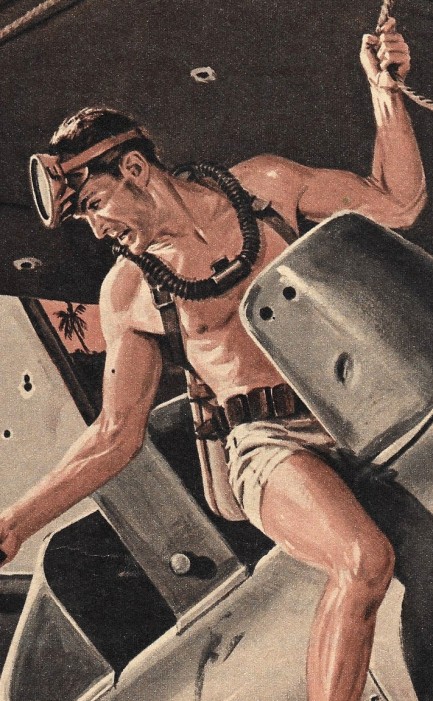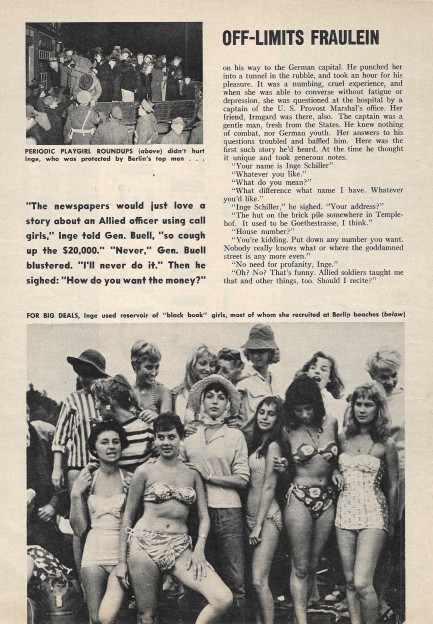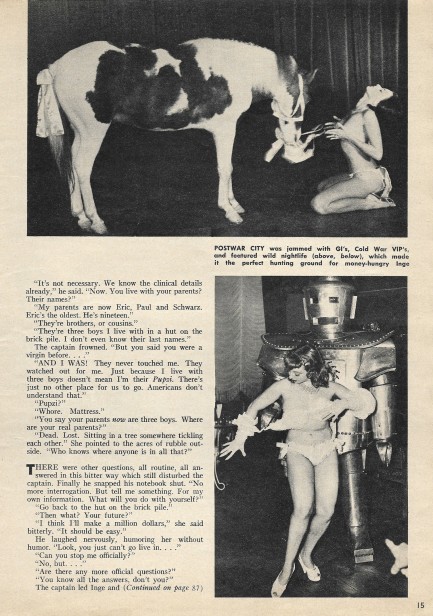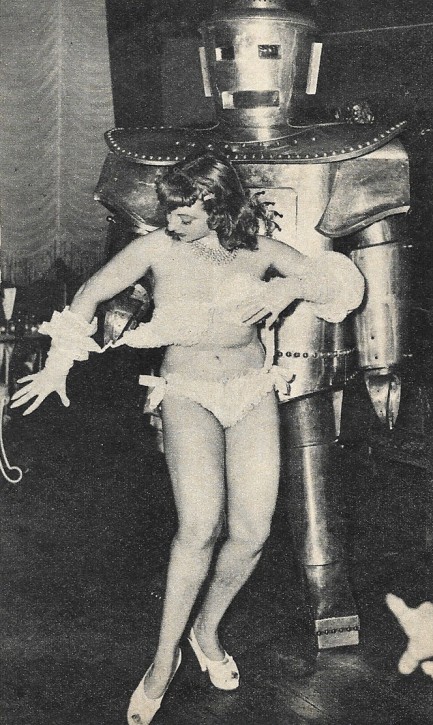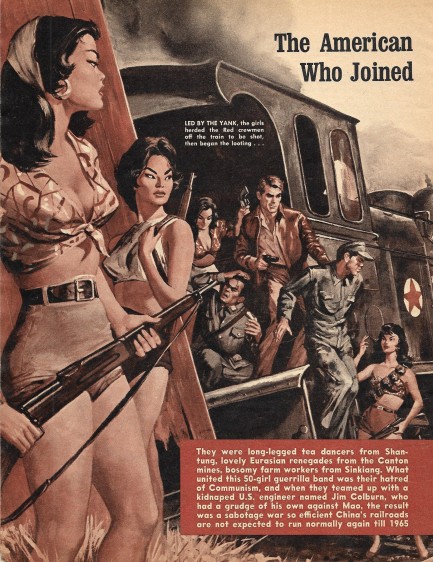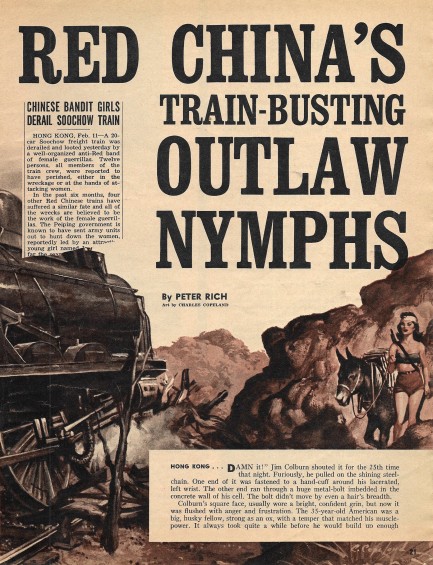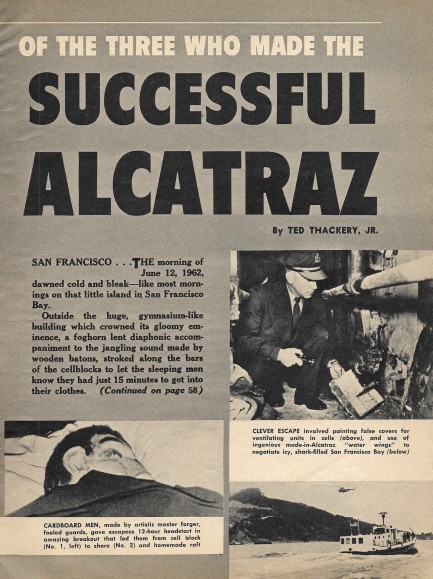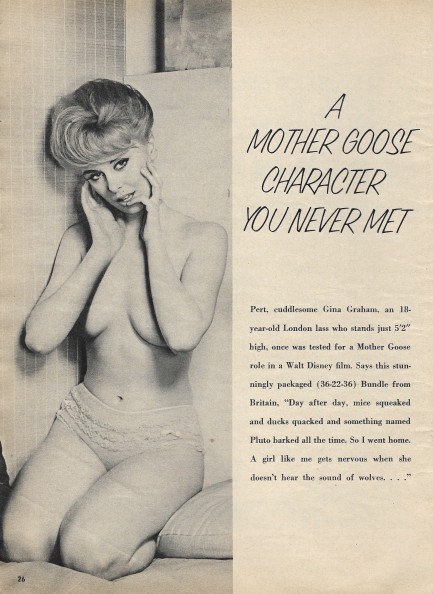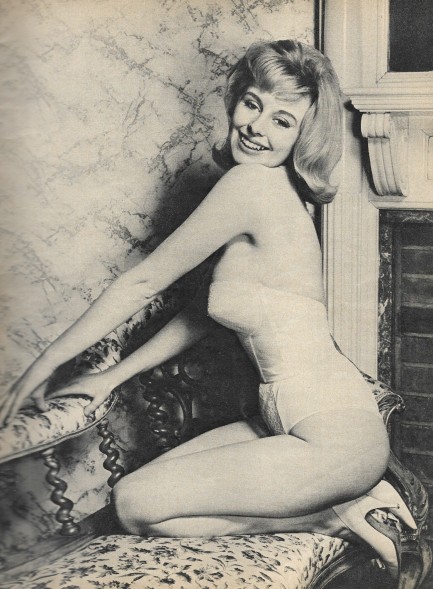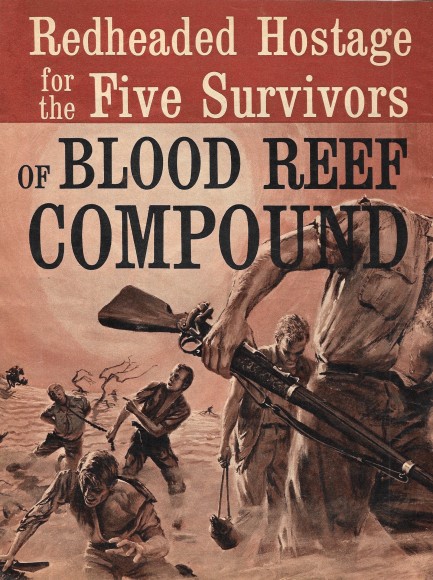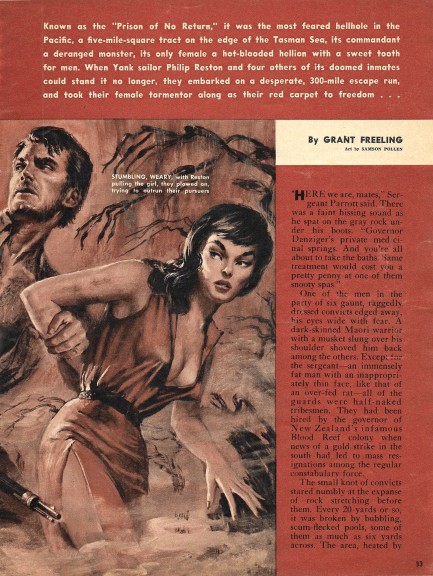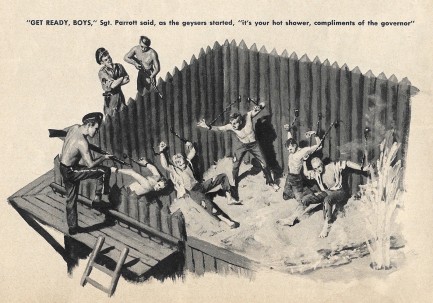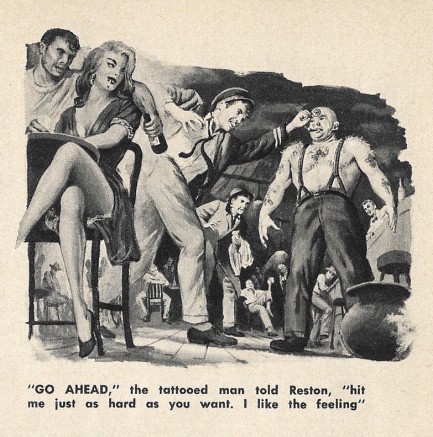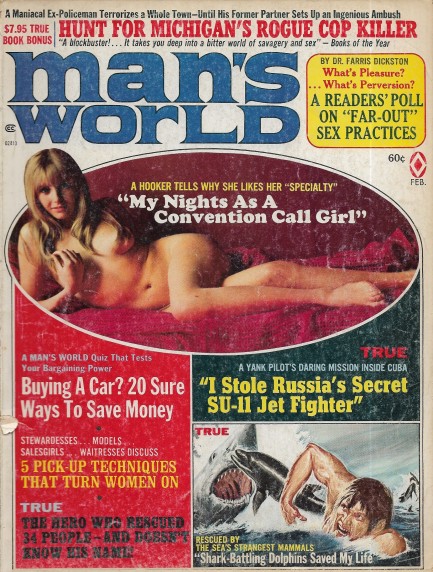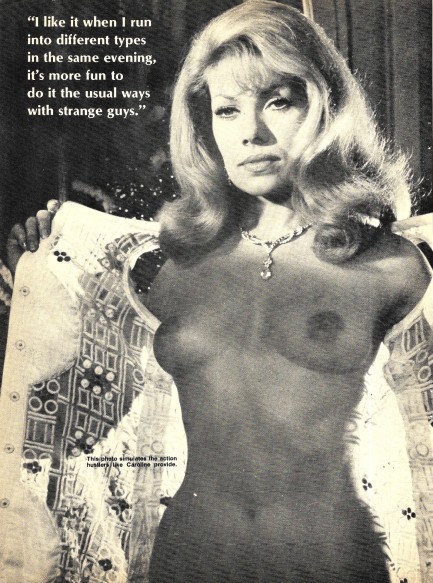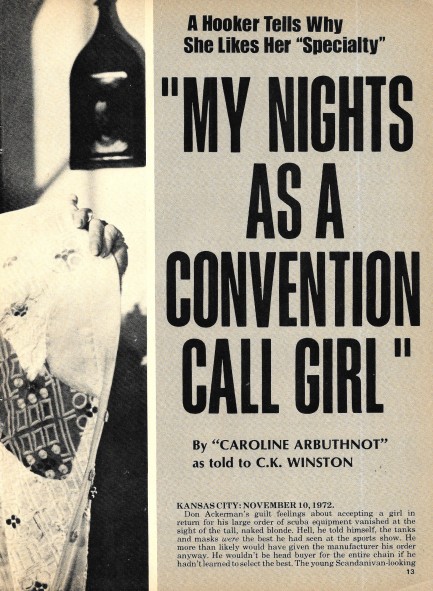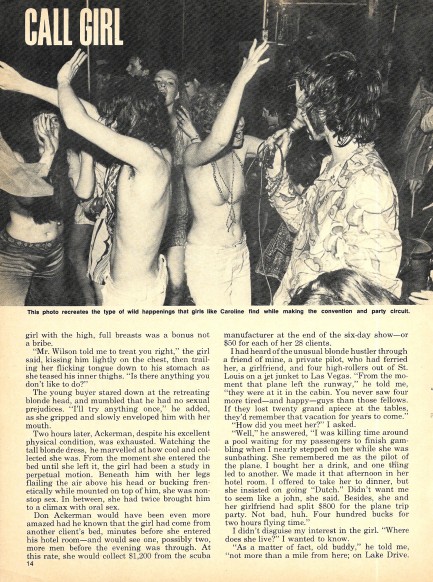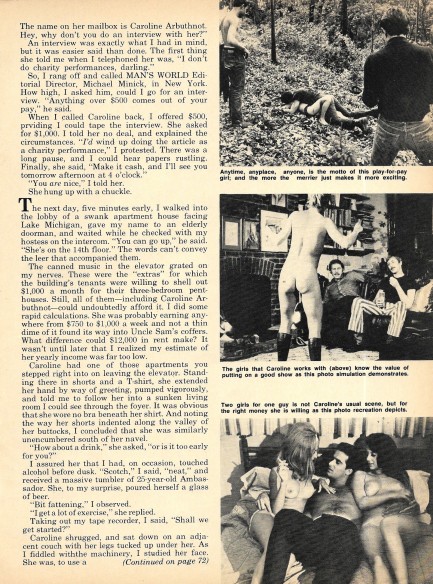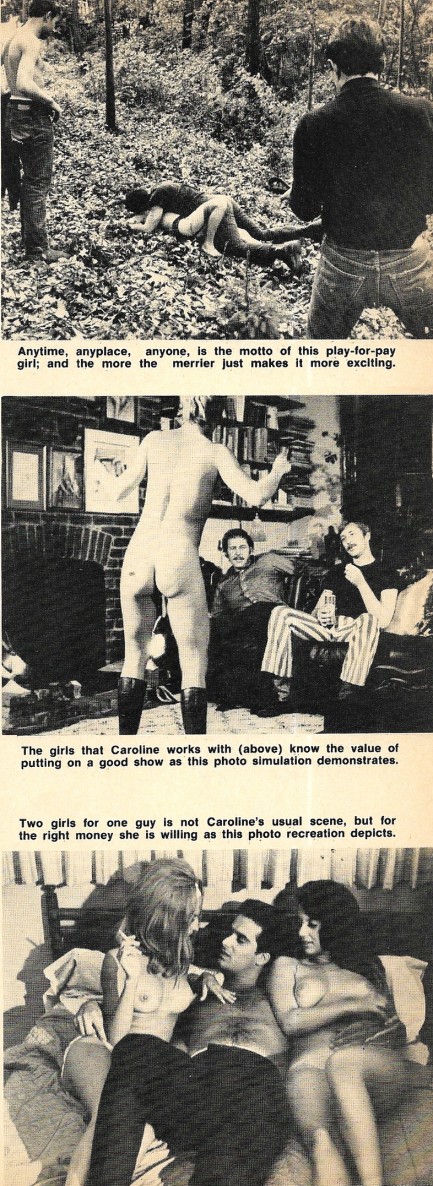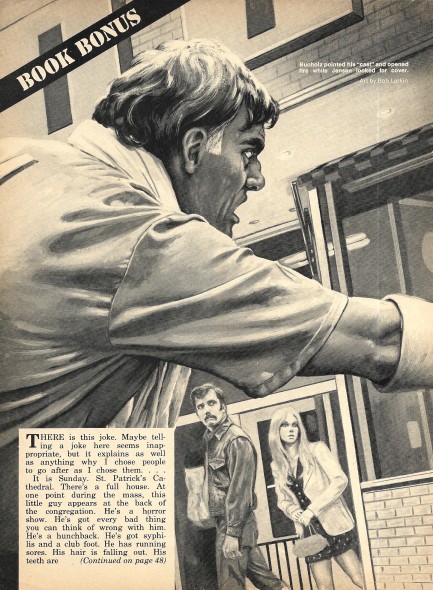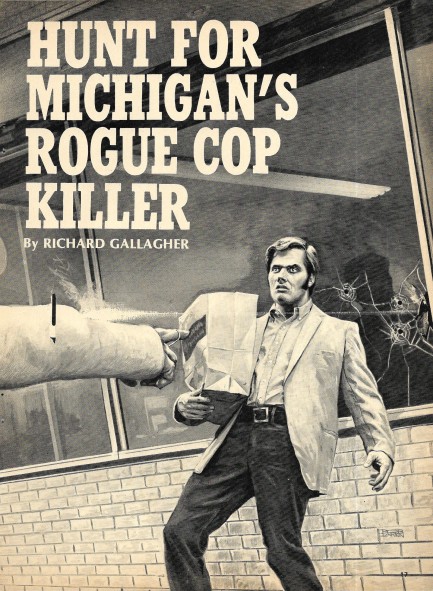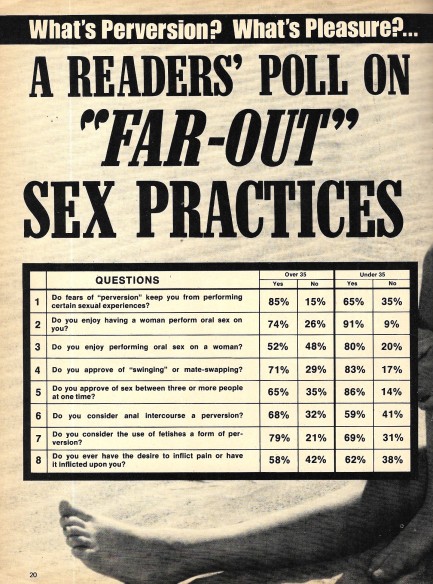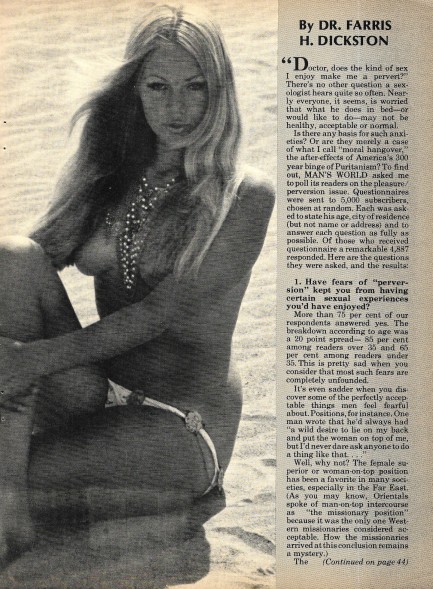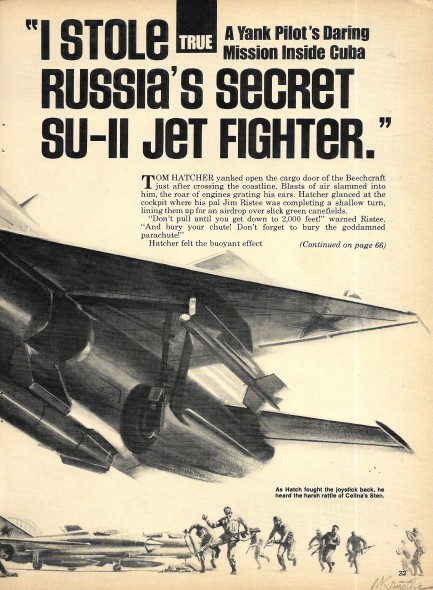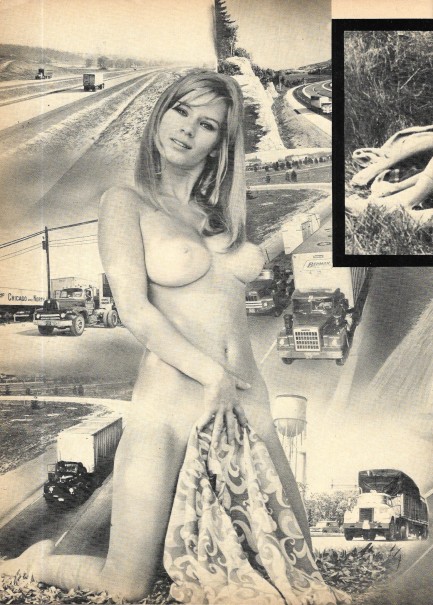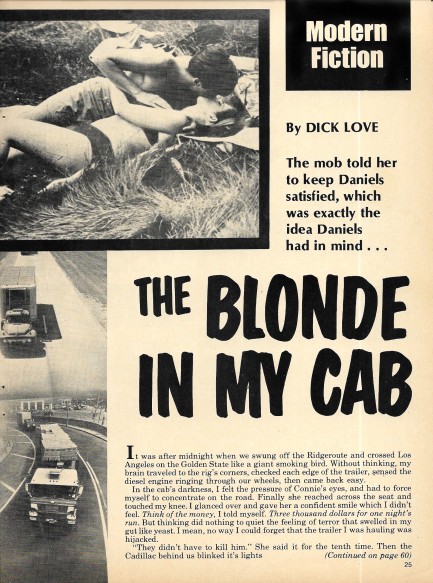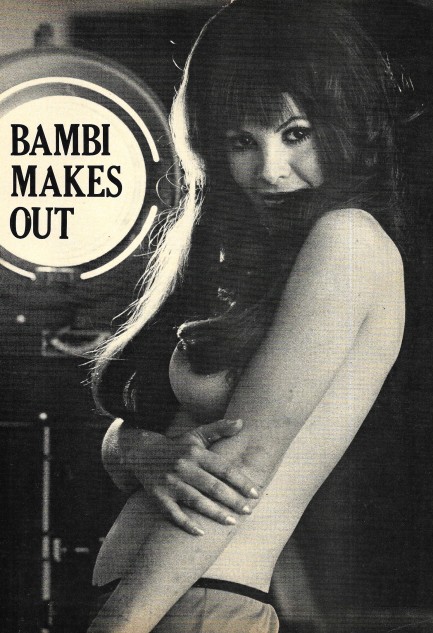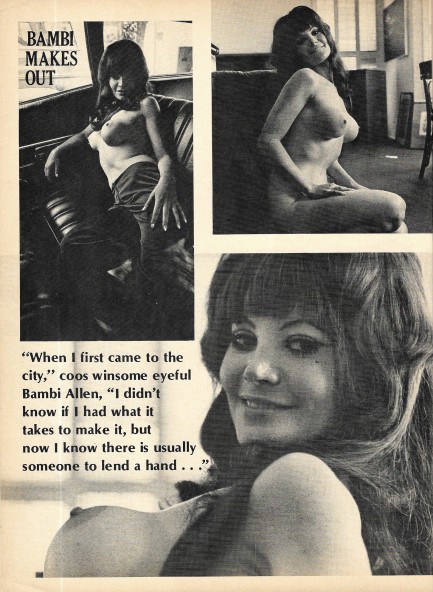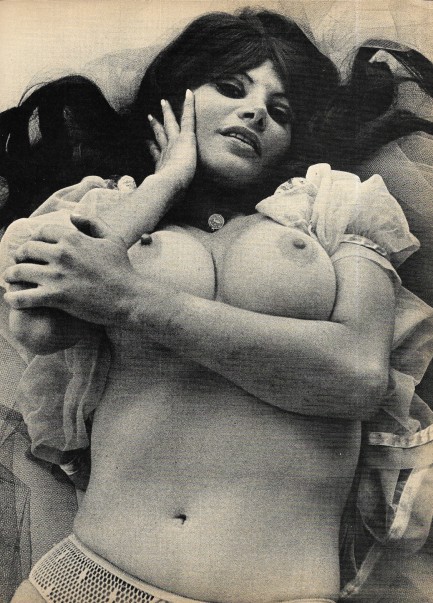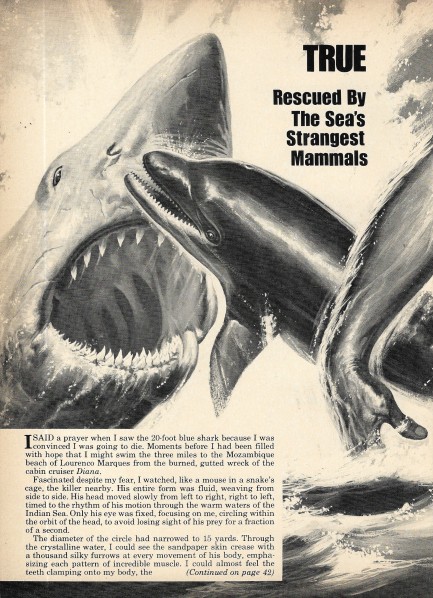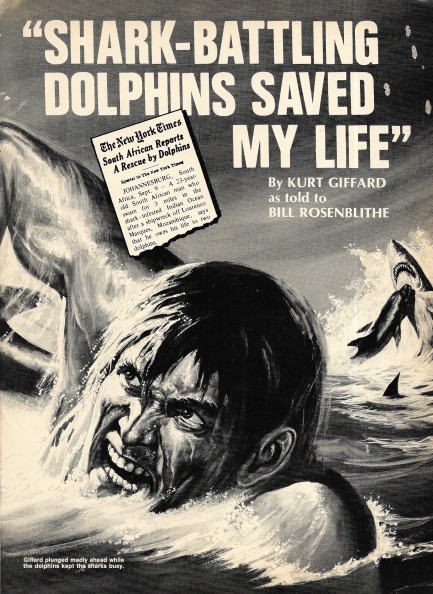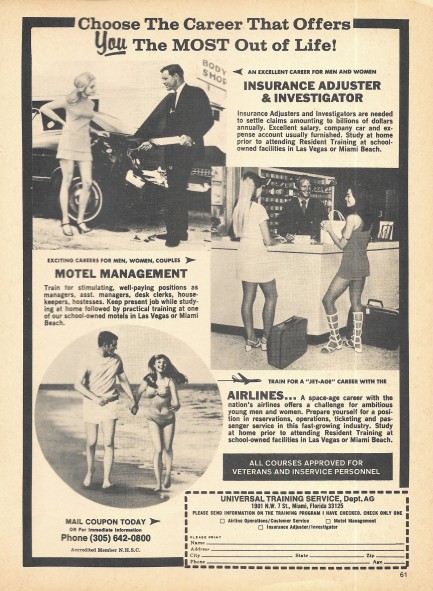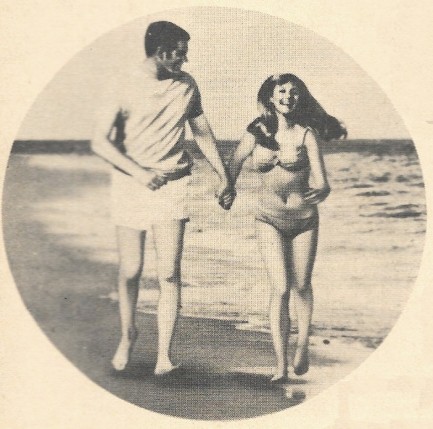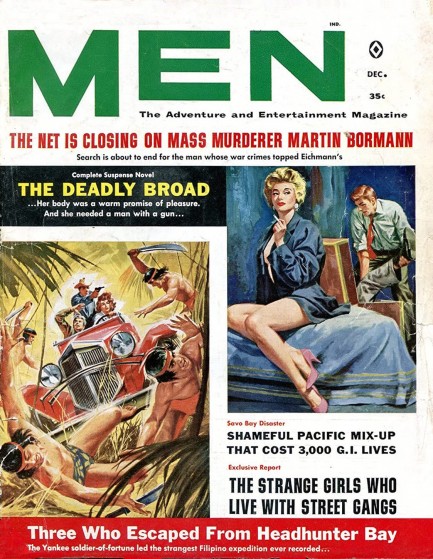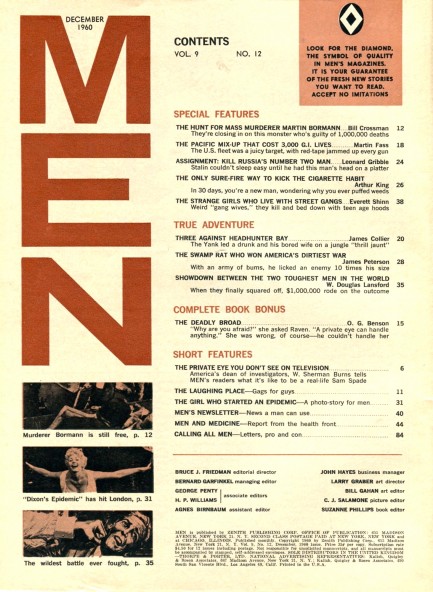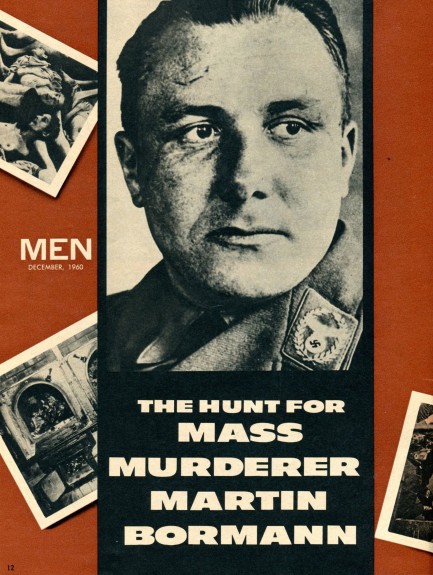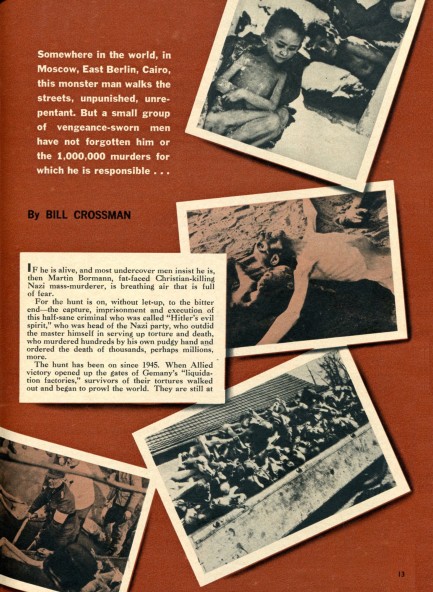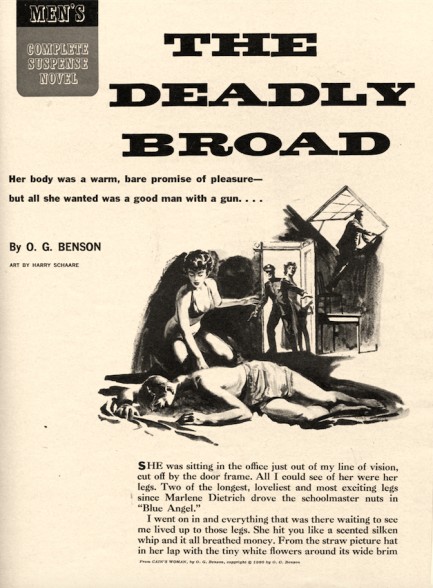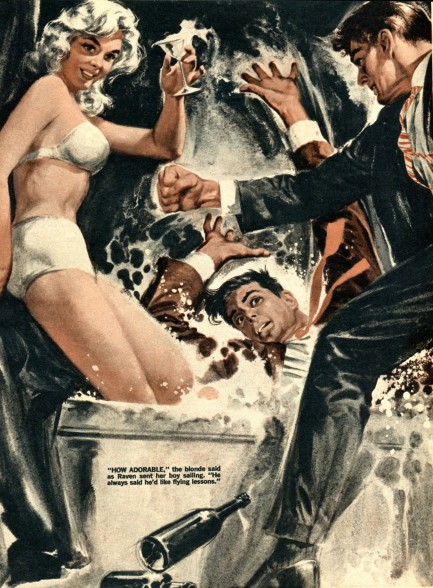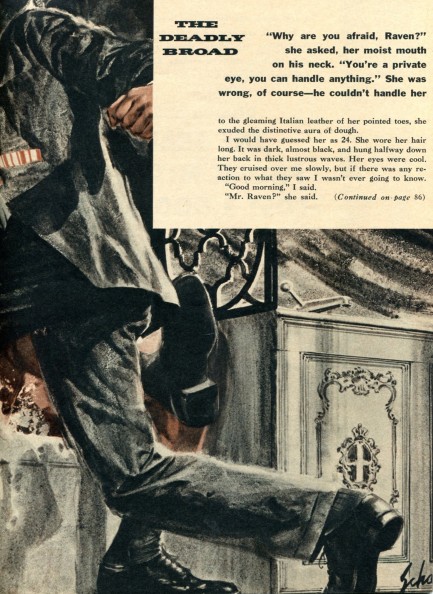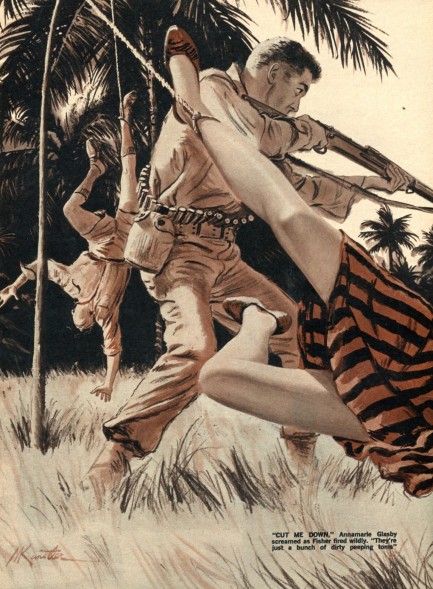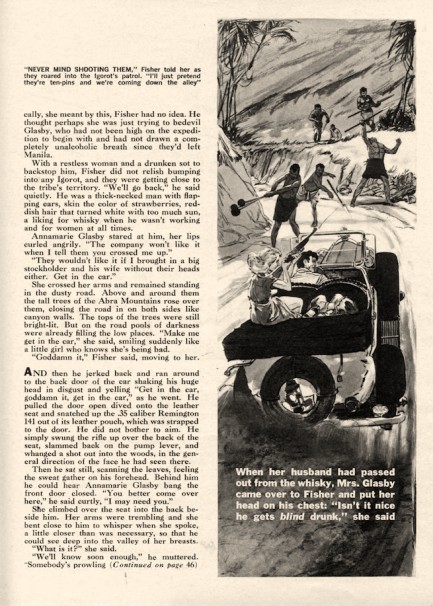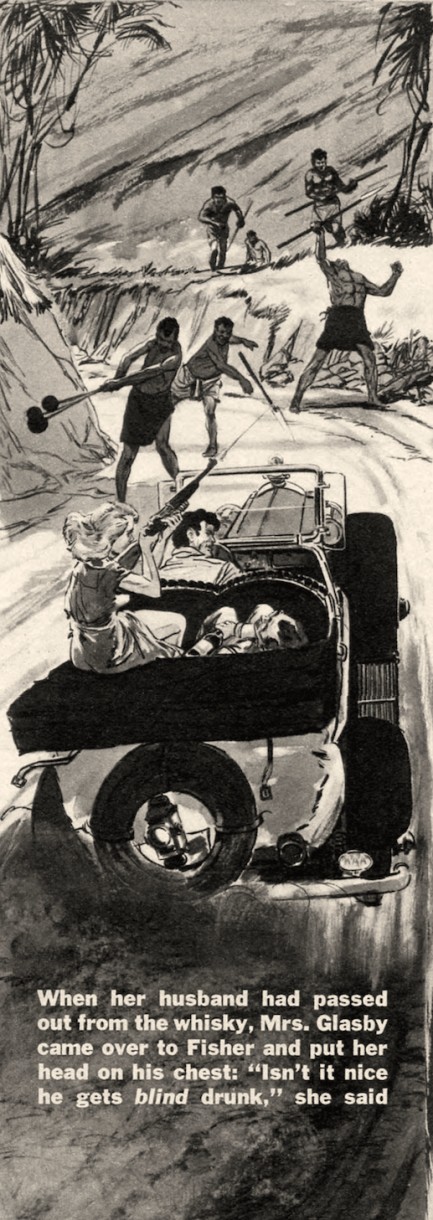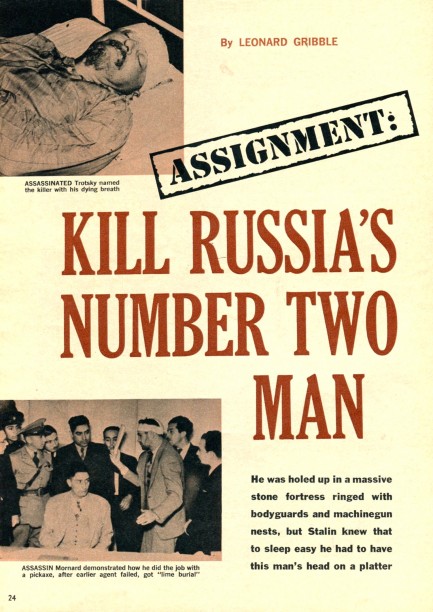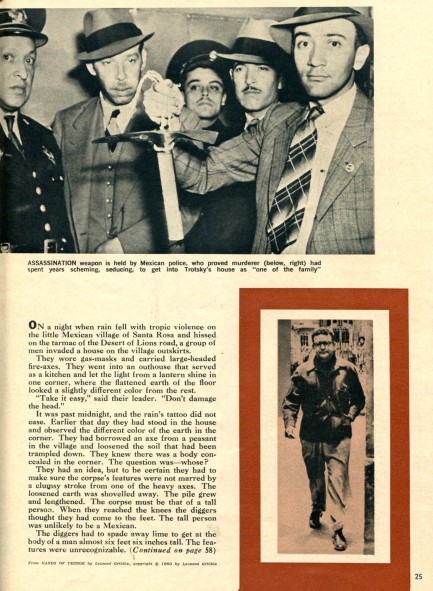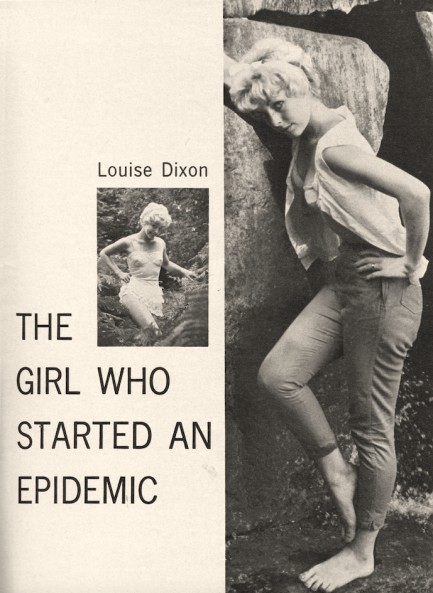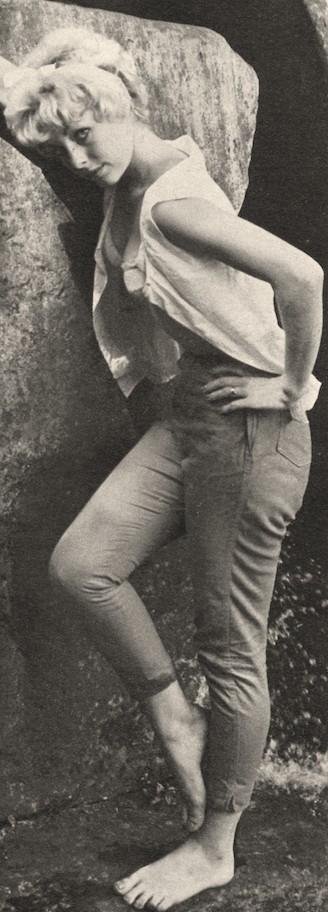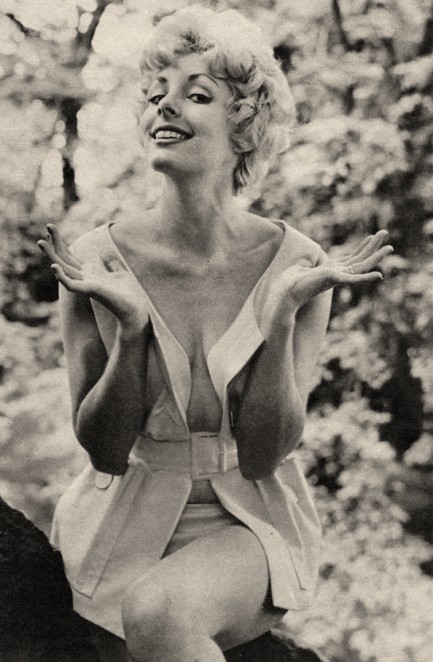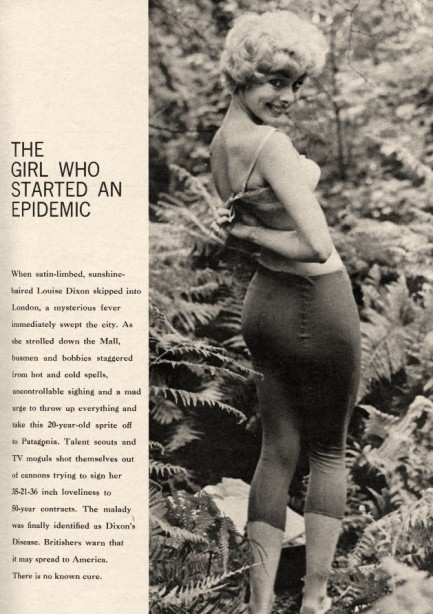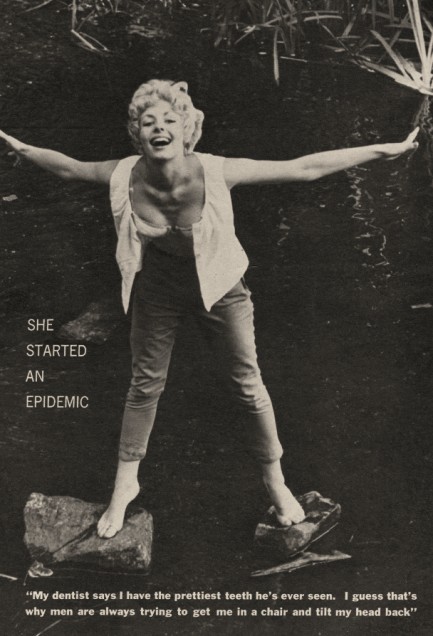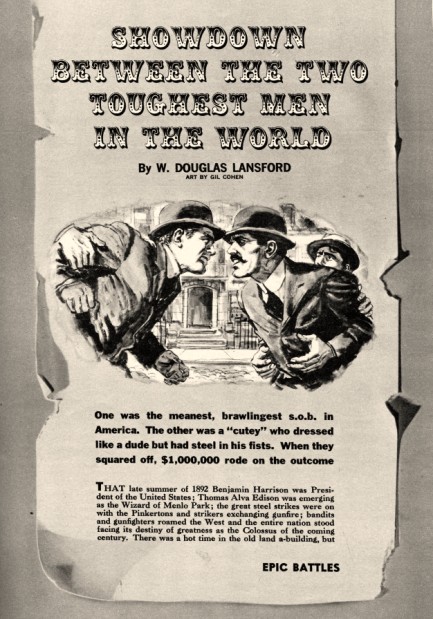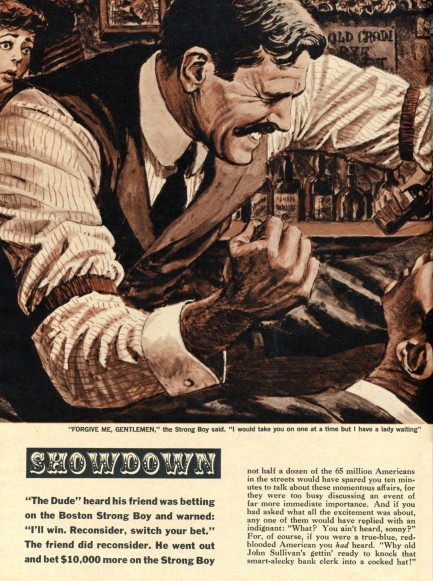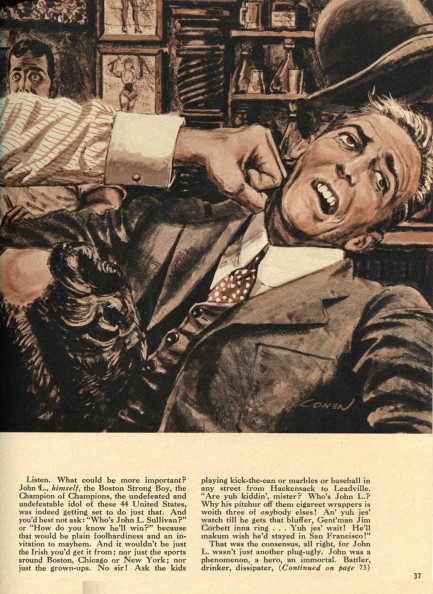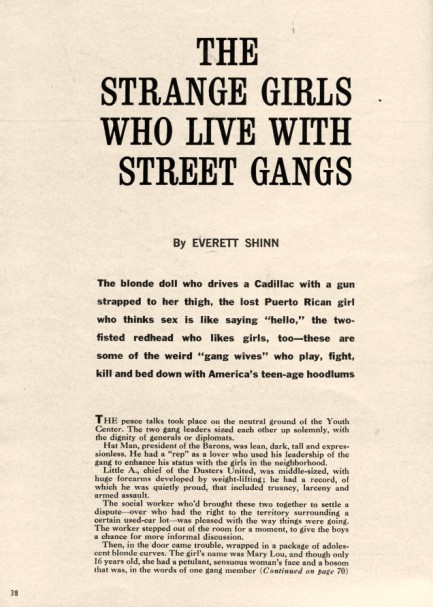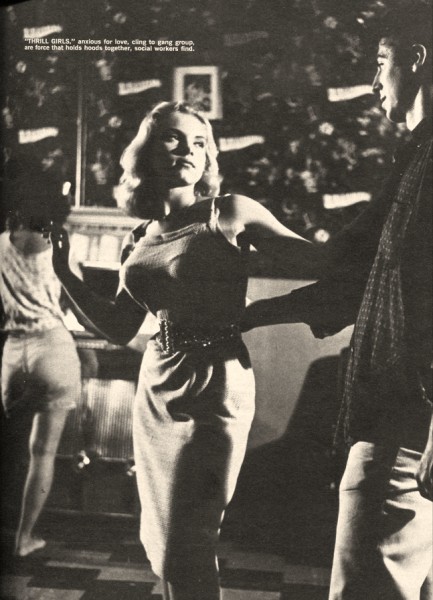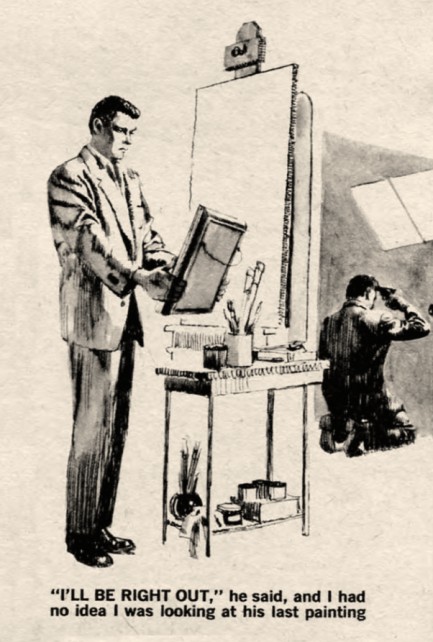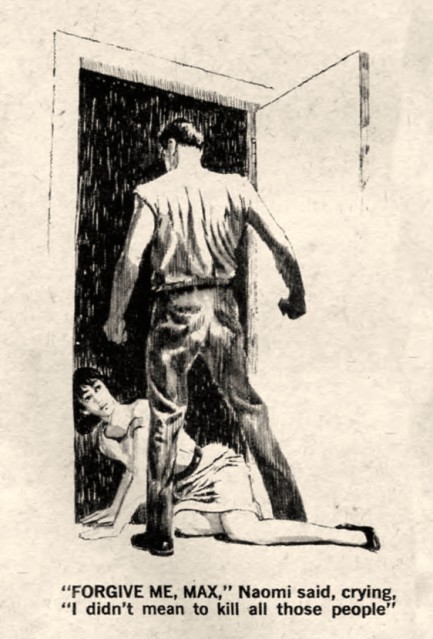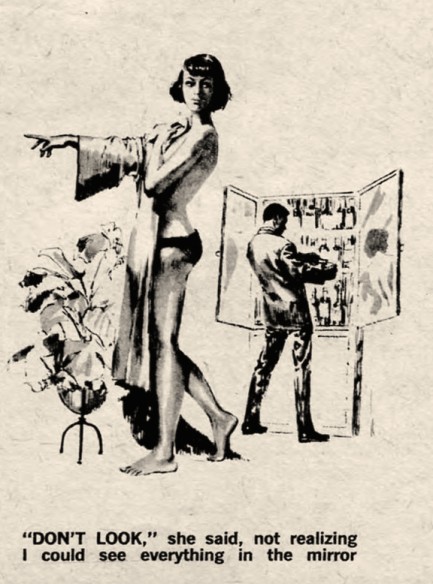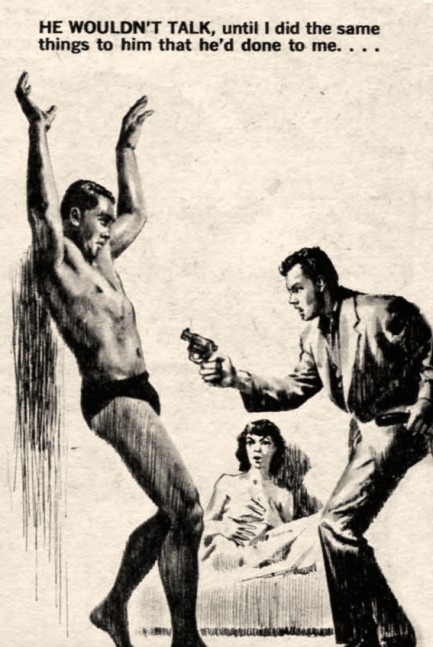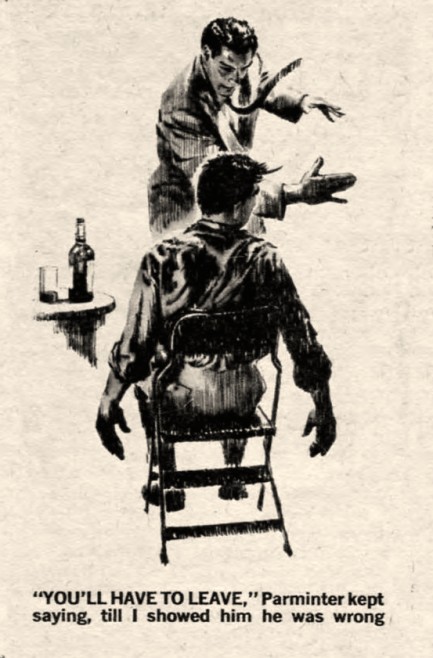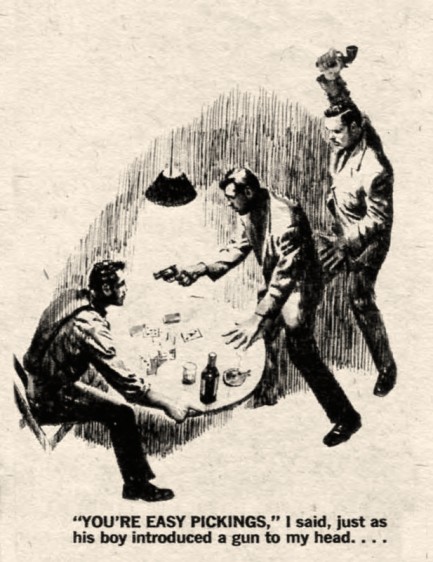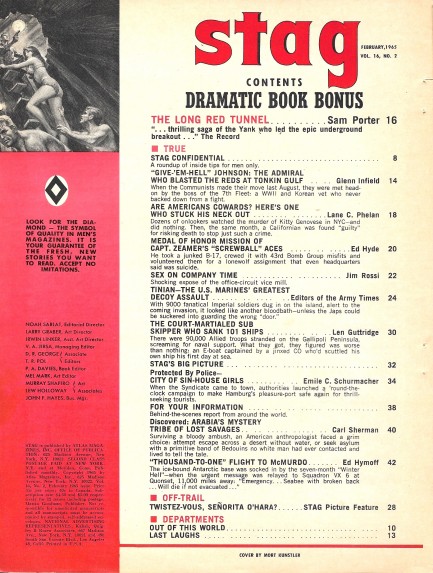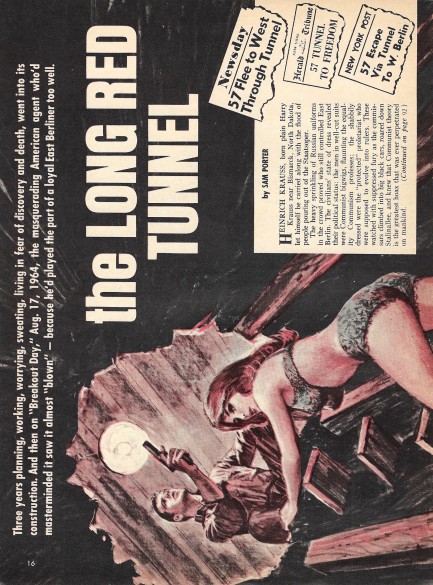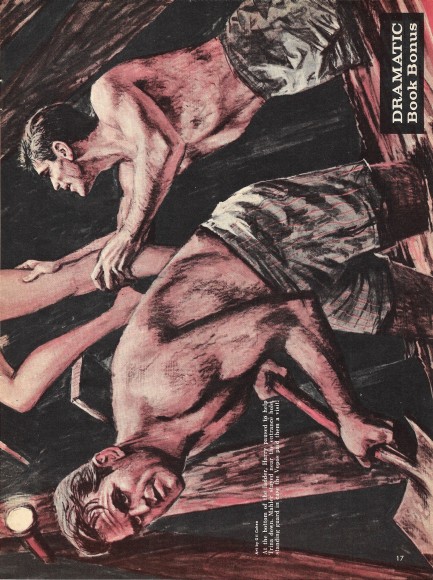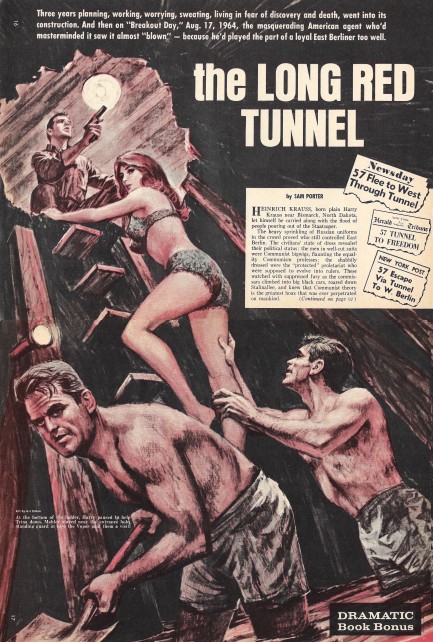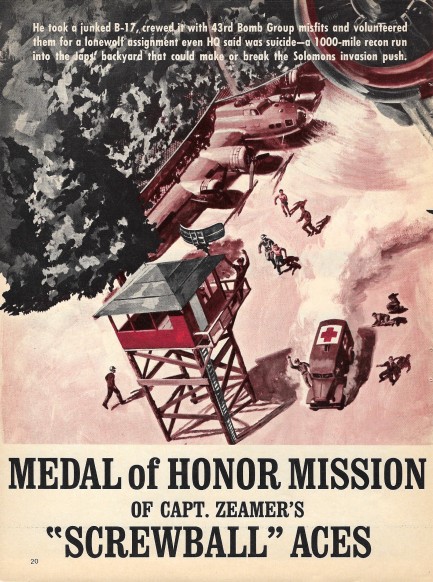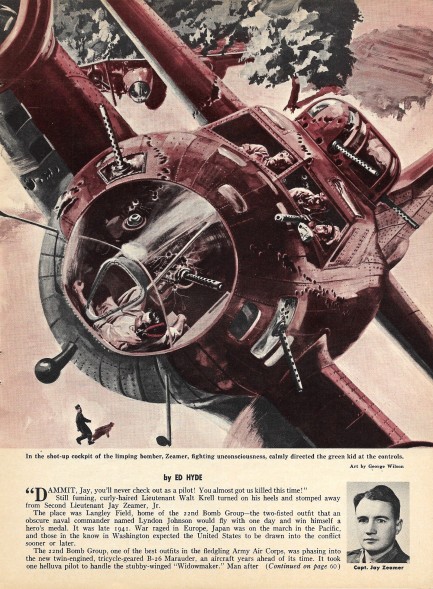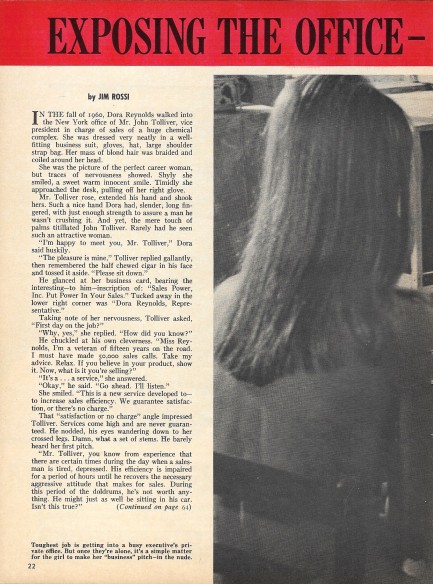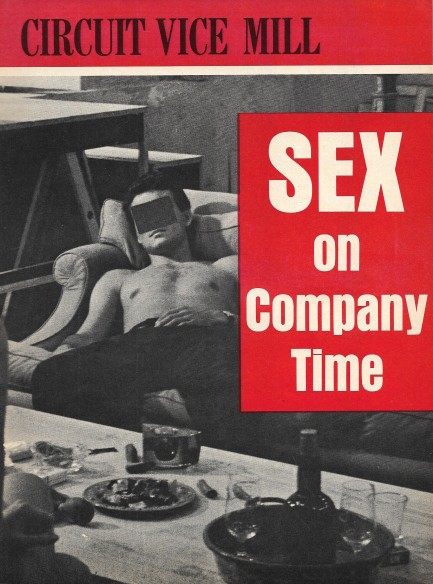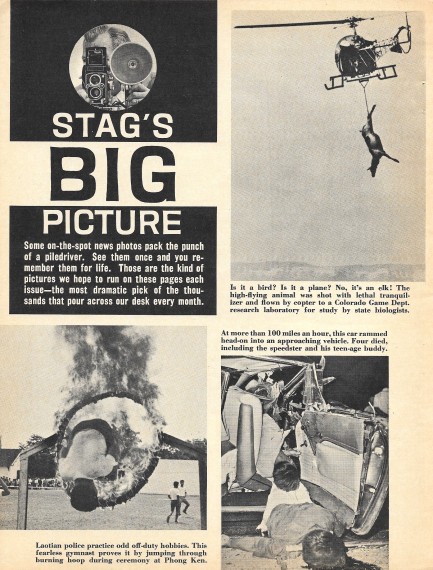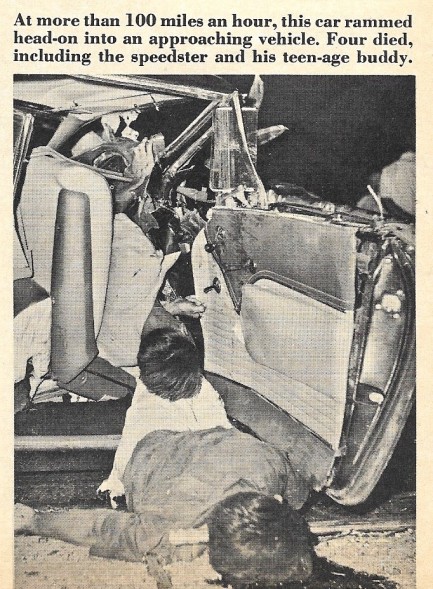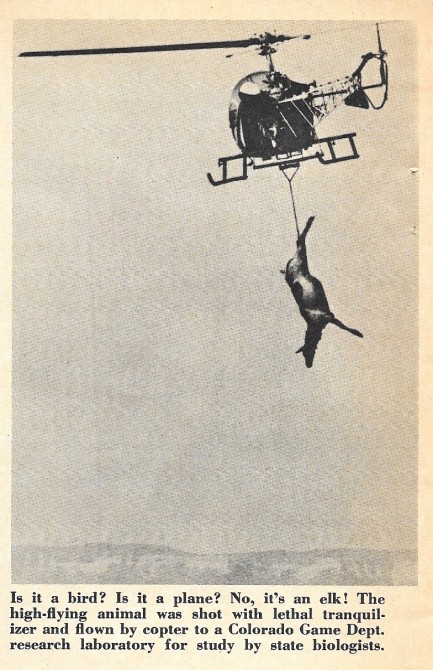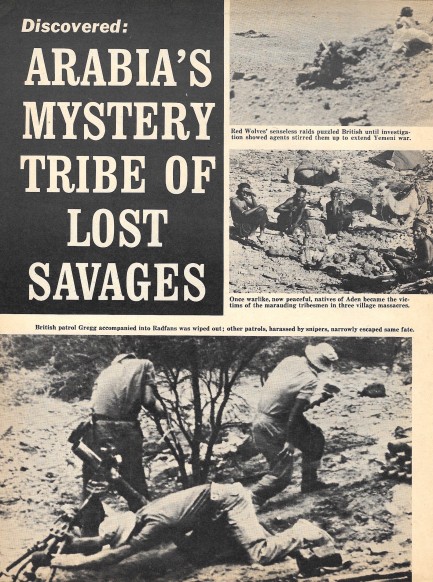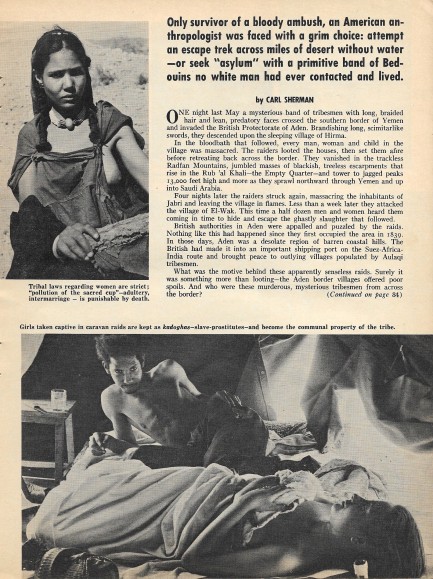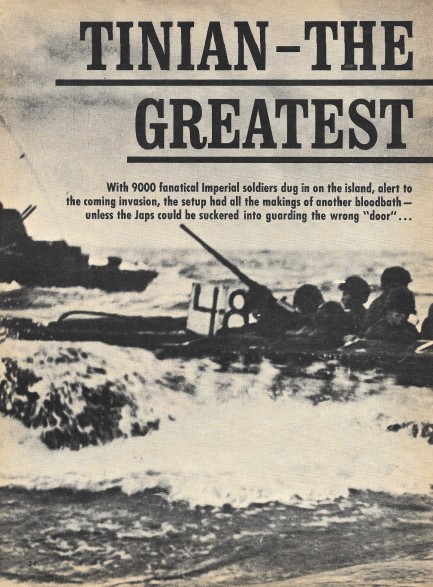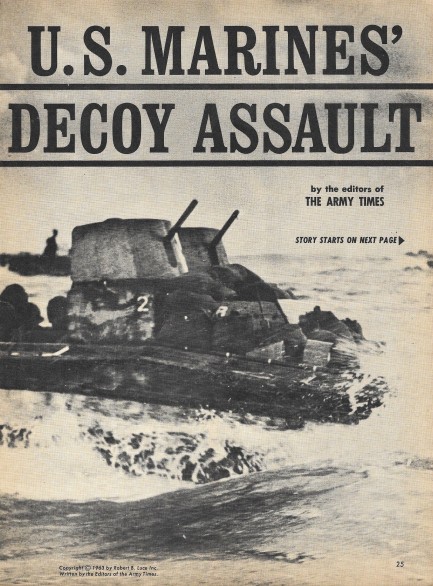 It's not comfortable, but it's reliable. 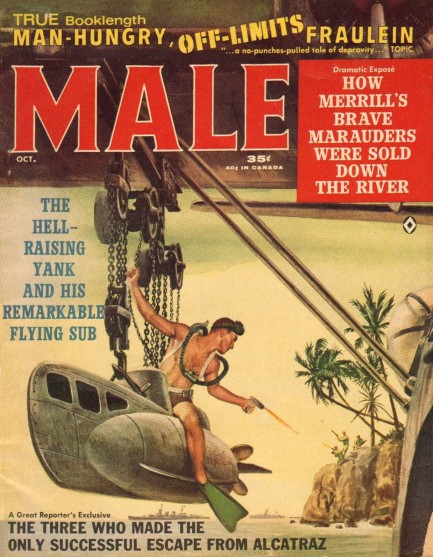
We're back to men's adventure mags today with an issue of Male from this month in 1962, with cover art by Mort Kunstler illustrating the tale, “The Hell-Raising Yank and His Remarkable Flying Sub.” We gave the story a read and it tells of Walter R. Cook, a U.S. soldier stranded in Burma who, with the aid of a local beauty (of course), finds and refurbishes an abandoned Catalina seaplane, which has attached to it a two man submarine. The sub was a type used during World War II that the operators rode like horses while breathing through scuba gear. Cook uses it to disrupt Japanese supply lines.
The story is a standard sort for an adventure magazine, but educational, since we'd never heard of rideable submarines. The illustration makes clear exactly what form it took. The magazine also offers stories set in China and New Zealand, and contains a detailed piece on an escape from Alcatraz, the very escape that inspired the Clint Eastwood film Escape from Alcatraz, involving the inmate Frank Morris, who may or may not have actually succeeded. The art throughout the issue is from the usual suspects—Charles Copeland, Samson Pollen, and Bruce Minney—and is tops as always. We have seventeen scans below.
 Leave it to Nazis to turn phys ed from your favorite class into the worst experience of your life. 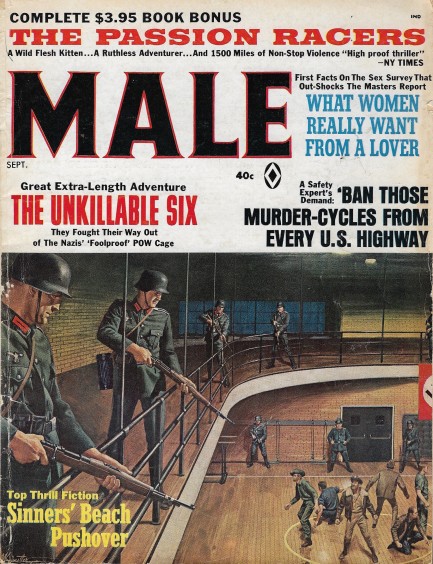
This cover of Male from this month in 1967 has cover art of history's worst gym class, painted by the great Mort Kunstler, and leave it to Nazis to ruin the one thing you can get a good grade in just by showing up. Another thing ruined is the magazine. When it arrived it turned out some pages were razored out of the center. Probably the most interesting pages. It's an occupational hazard, we suppose. We generally assume the seller had no idea, as these mags are so often the leftovers of fathers and grandfathers, but if it was in fact deliberate, well then, cocks on their house! That's the saying, right? Or it pox? Doesn't matter. The silver lining was that we didn't have to worry keeping the magazine intact while scanning. We just ripped it apart, which sort of felt good.
There's still plenty of interesting material inside this mutilated Male. There's fiction and fact, art from Gil Cohen and Bruce Minney, plus more from Kunstler, a screed against motorcycles, a lot of pro Vietnam War content, with lots of digs at peace activists and draft fugitives. The magazine works especially hard to convince readers that draftees who fled to Canada faced lives worse than if they'd gone to Southeast Asia. We doubt quite seriously that anything could be worse than dying in a hot jungle for no rational purpose 10,000 miles from home. But maybe we're biased—our fathers were war vets, and they had one wish in life: that the military never get its mitts on us. Also that we never do hard drugs. Well, one out of two isn't bad. Twenty scans below. 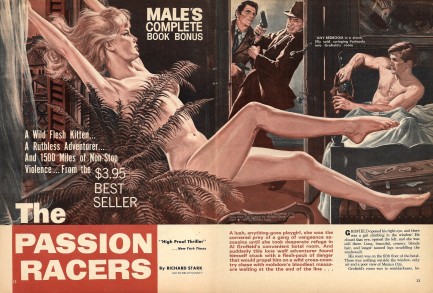 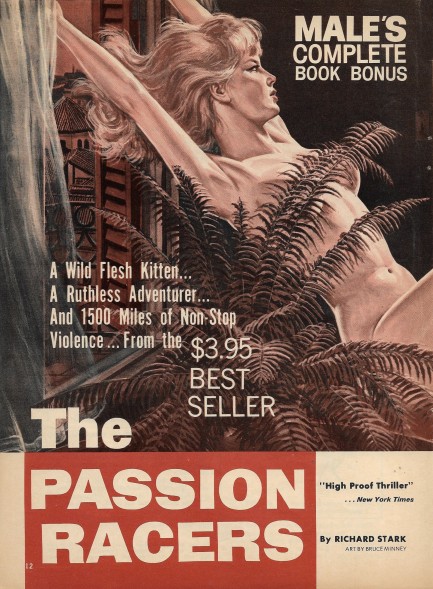 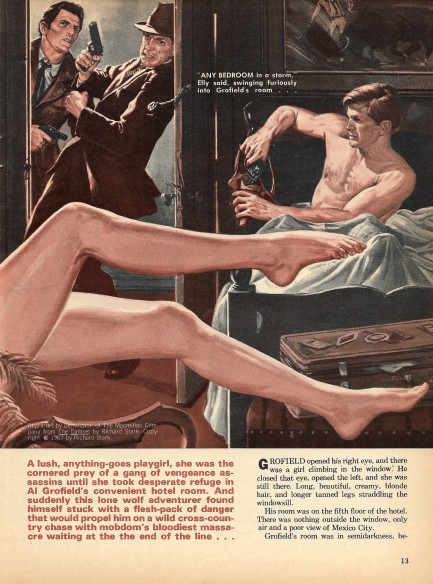 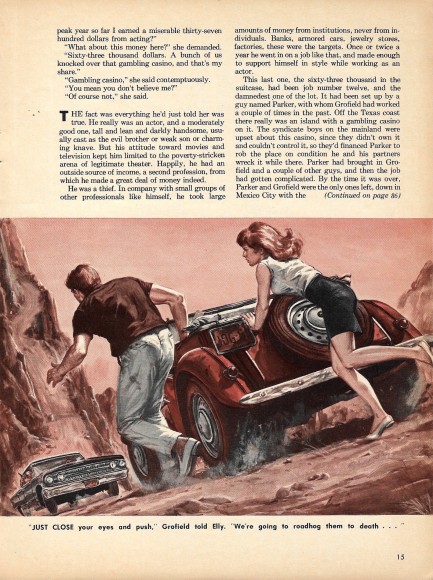 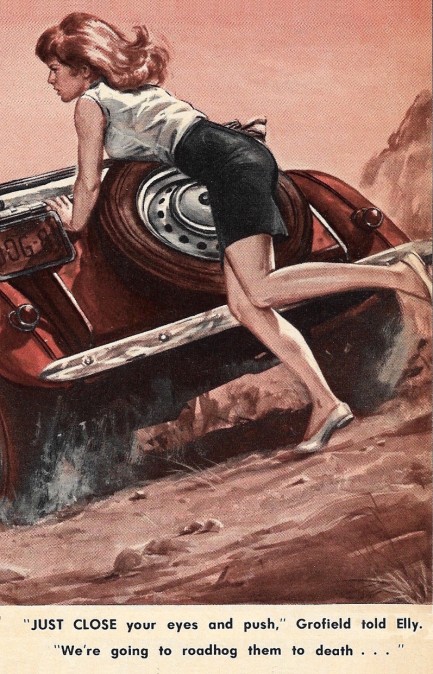  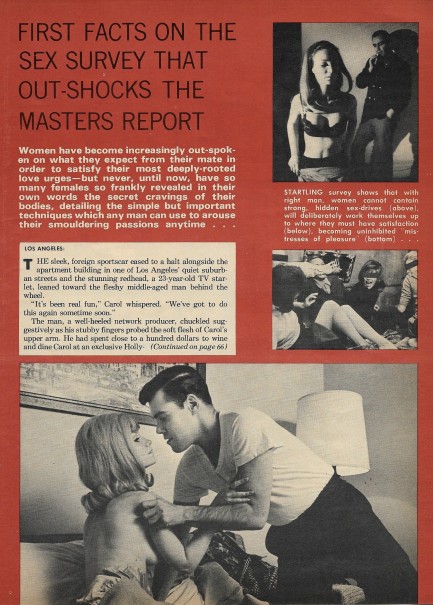 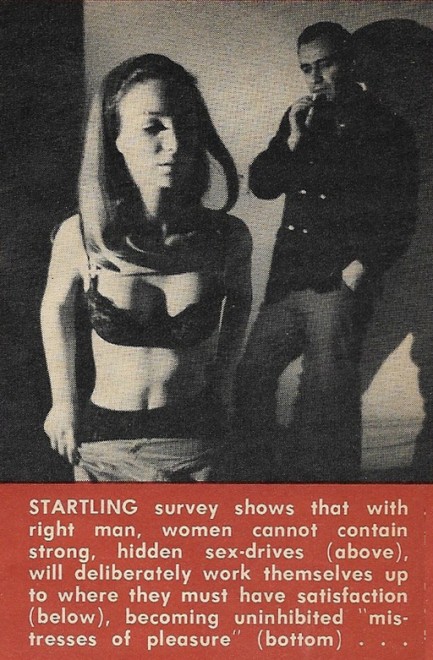 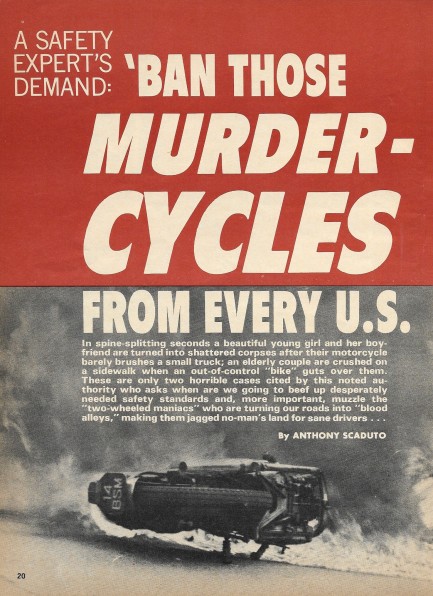  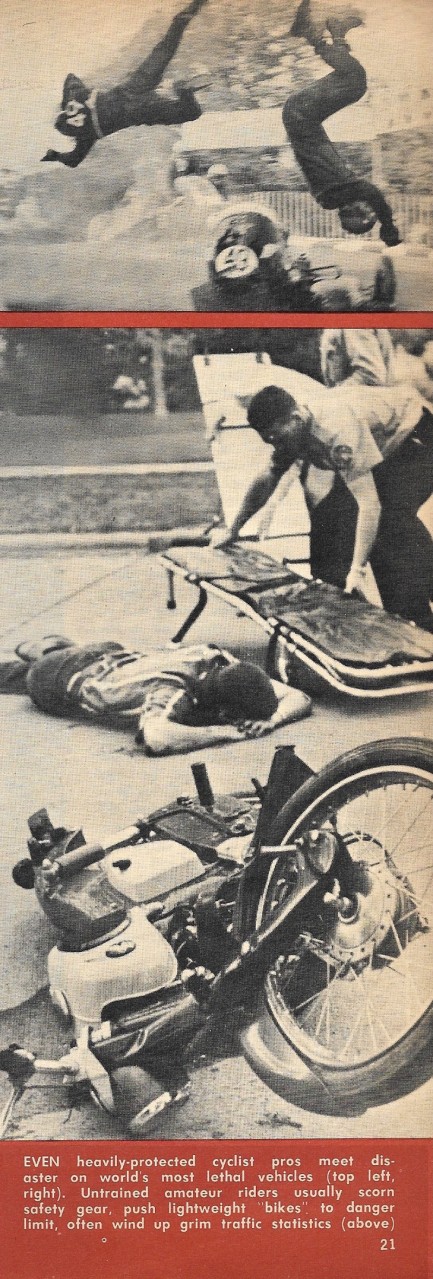 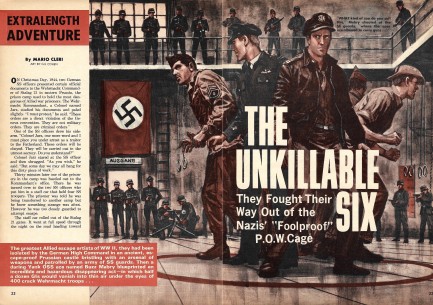 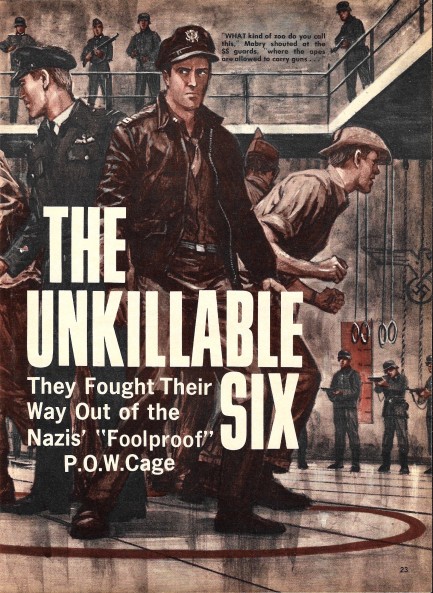 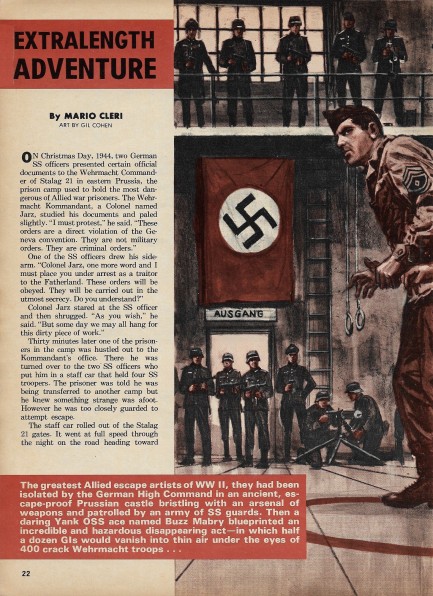 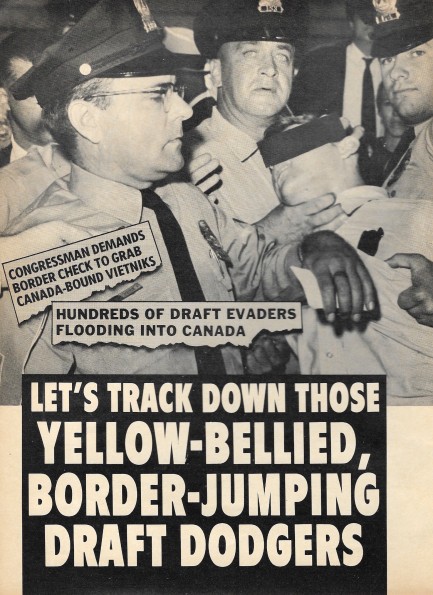 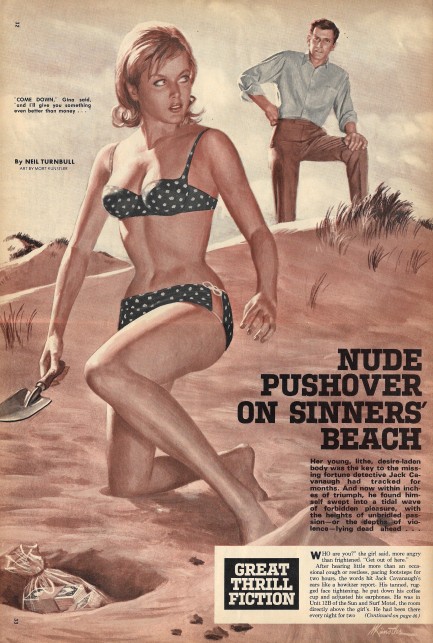 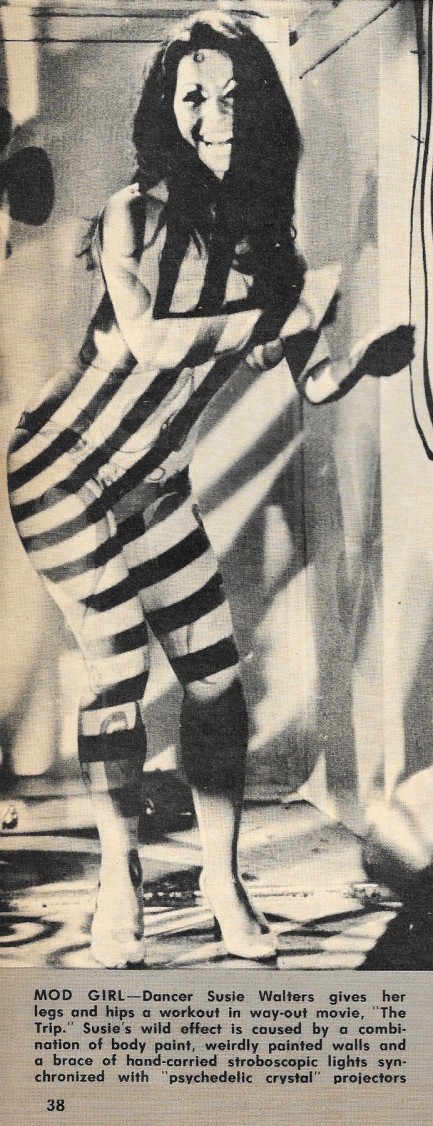 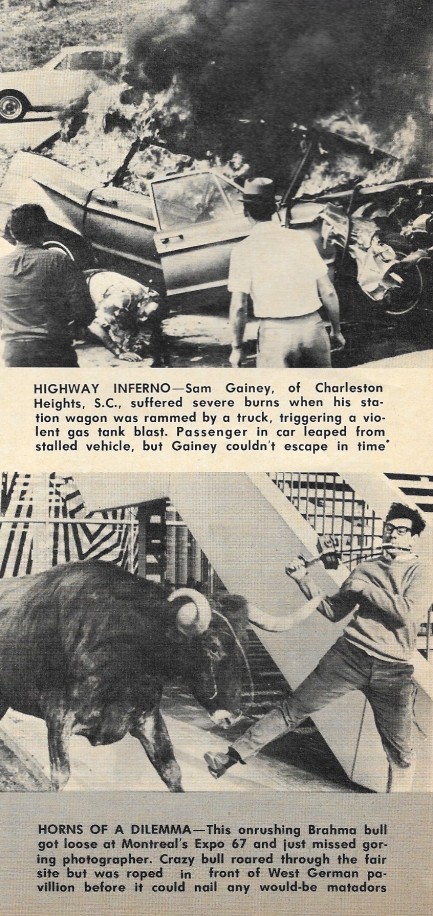  
 This Stag hunt turned up a less-than-healthy specimen. 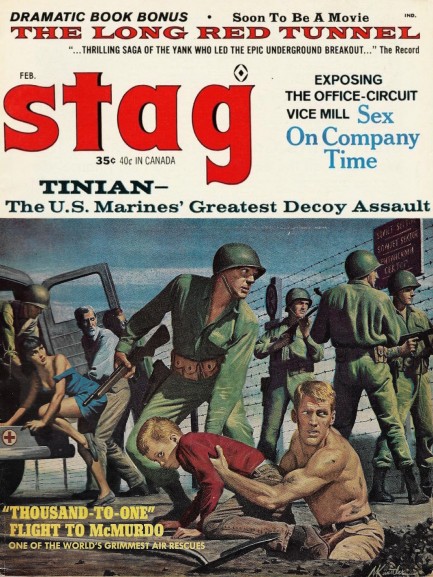
Above and below are a few scans from a February 1965 issue of Stag magazine. This was thrown gratis into a batch of men's adventure magazines we purchased due to the fact that it had serious issues—i.e. numerous pages missing. That's both bad and good. It's bad because we'd love to see the missing art and read the missing bits of stories, but it's good because, since scanning generally destroys these old staple bound magazines, we had no qualms about scanning what was left of this one. The magazines we like tend never to get scanned, though we keep promising. We did the deed on this one with a clear conscience and tossed the carcass into the recycling bin. But we kept the cover, which was painted by Mort Kunstler. You can't throw away the covers. It's just wrong. Scans below.
 When there's serious killing to be done. 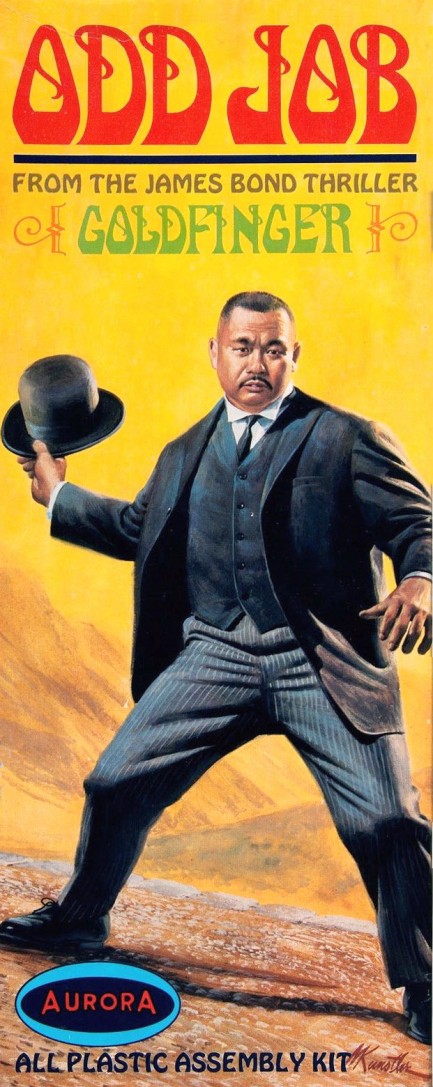
We're reading a James Bond novel at the moment and it reminded us that a long while back we downloaded these shots of an amazing 1966 Aurora Plastics Co. model of Goldfinger bad man Odd Job. While the product is nice, as you see below, the box art is of astounding quality, the equal of what you'd see on most paperback covers. There's a reason for that—it was painted by Mort Kunstler. You can see his signature on the lower right. According to the back of the box Odd Job is suitable for ages eight to adult, so if you want to buy one of these—and we do—there's no shame. Aurora says it's fine! Not like they were trying to increase sales or anything. They also increase sales by failing to mention prominently that the model is plain white plastic. You have to paint it if you want the results you see below. But that at least offers the opportunity to customize. Blue hair? Sure. Whimsical curlicue mustache? His first name is Odd, after all. Unfortunately, the one we saw ran $150, which is quite a bit, but having it on our website is almost like owning it. 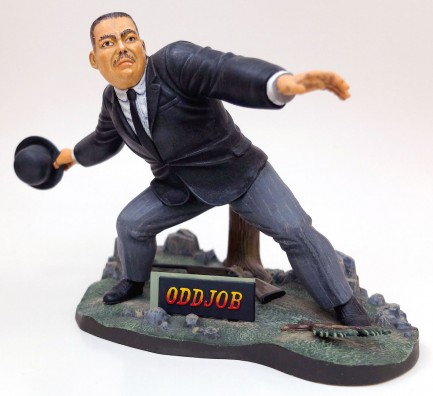 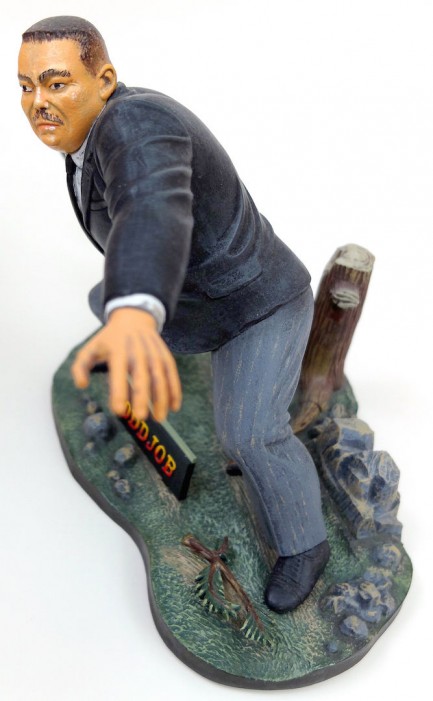
 I believe in you, and I'm not alone. On the radio they said you could win if the champ slips in your blood and knocks himself out falling. 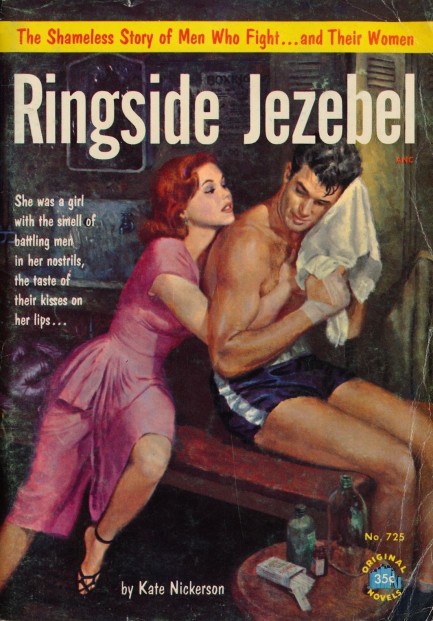 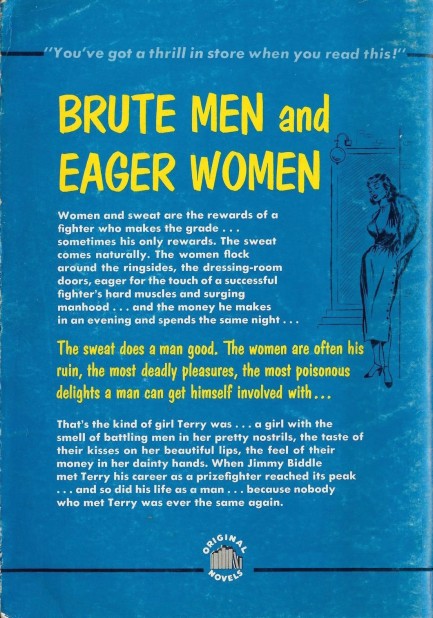
Mort Kunstler mainly painted for men's adventure magazines, but he did the occasional paperback cover and you see his work above on Kate Nickerson's 1953 boxing drama Ringside Jezebel. The title tells you everything you need to know. A femme fatale gangster's moll orbiting the professional boxing scene insinuates her way into the lives of promoters and fighters, bringing ruin to them all. But inevitably she meets a contender and plays the same game with him only to realize—after trapping him into throwing his biggest fight—that maybe she actually likes him. Having him in the first place was never an issue. It's winning him back that looks to be the problem. Classic boxing potboiler from Nickerson, née Lulla Adler, author of other memorable efforts such as Street of the Blues, Love Takes the Count, and Passion Is a Woman.
 War is hell, but being a prisoner of war can be worse. 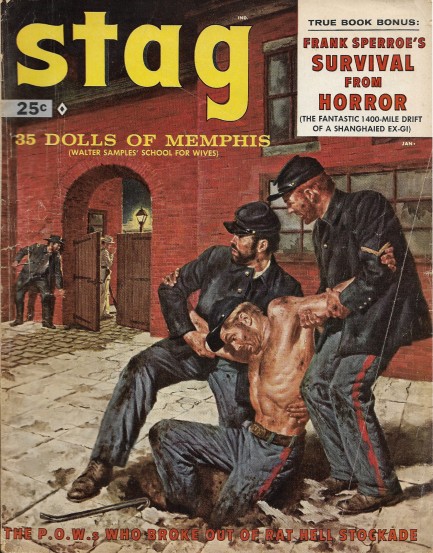
This January 1959 copy of Stag is an example of the joys of collecting old magazines. We bought it for three dollars, but it's being auctioned on Ebay right now for $100. Mort Kunstler handles the cover chores, illustrating Edward Newman's story “The P.O.W.s Who Broke Out of Rat Hell Stockade,” which deals with a group of Union soldiers during the U.S. Civil War who tunneled their way out of Richmond's Libby Prison. The story is true. The escape was one of the most successful breakouts of the war. The escapees were highly motivated due to the fact that Libby Prison was a hellhole that generated high mortality rates due to abuse, starvation, exposure to severe weather, and terrible overcrowding. A contemporary newspaper had this to say: “They are huddled up and jammed into every nook and corner; at the bathing troughs, around the cooking stoves, everywhere there is a wrangling, jostling crowd; at night the floor of every room they occupy in the building is covered, every square inch of it, by uneasy slumberers, lying side by side, and heel to head, as tightly packed as if the prison were a huge, improbable box of nocturnal sardines.” Inside Stag is art from James Bama, Kunstler again, Joe Little, Al Rossi, and Bruce Minney. You also get model/actress Irène Tunc, who was Miss France of 1954 and appeared in about thirty films during a three-decade film career. All this and more below, in twenty-three scans.
Update: we got the following e-mail from James N:
The cover of Stag, January 1959 was painted by James Bama. The credit to Mort Kunstler as printed in the magazine was an editorial error. Bama has confirmed this. For the sake of historical accuracy it would be nice if you changed your Jan. 9, 2017 post to reflect Jim Bama's true credit. We've talked a lot about how official credits can be wrong, so we're inclined to believe the cover was mistakenly attributed by editors because we already know they were human and made these types of goofs. But the process of collecting and curating vintage art offers the chance to get things right. So we're calling this cover a Bama, and thanks to James N. for taking the effort to write us. 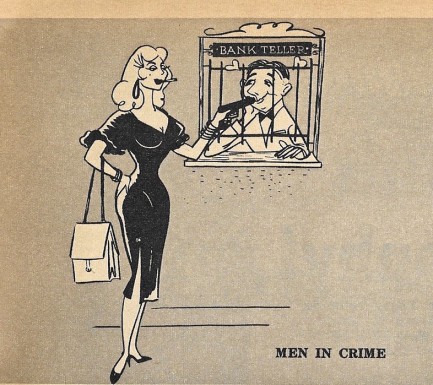 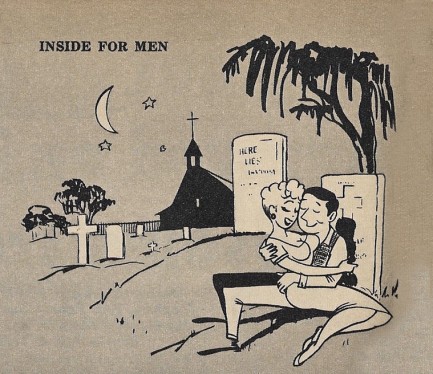 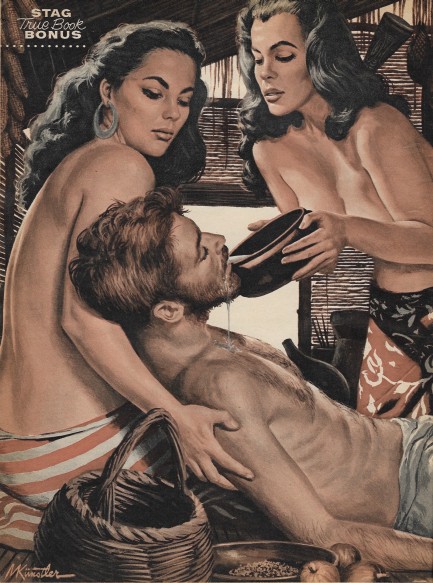 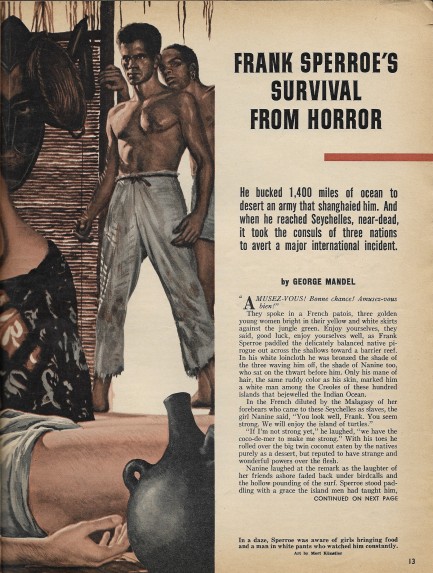 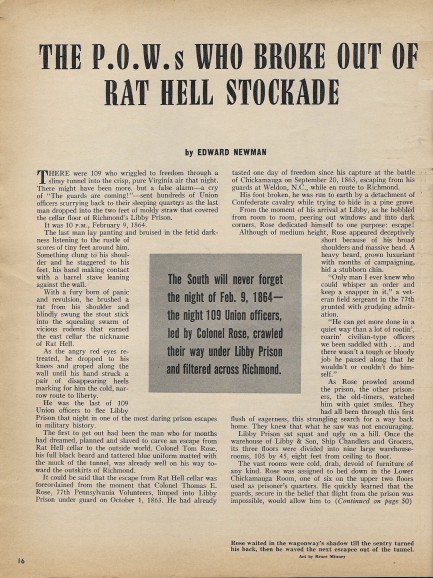 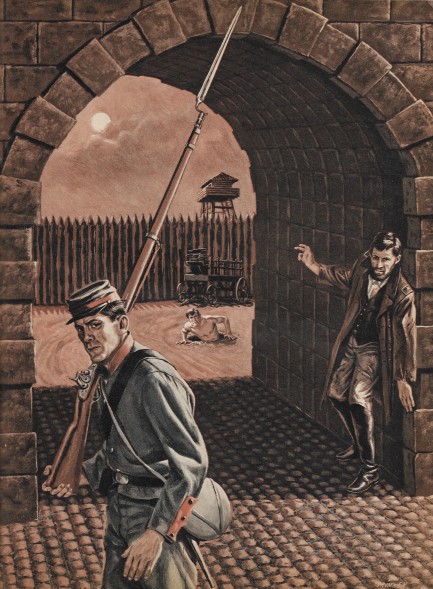 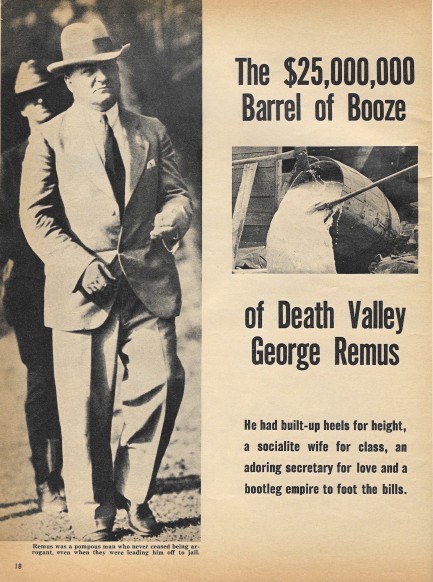 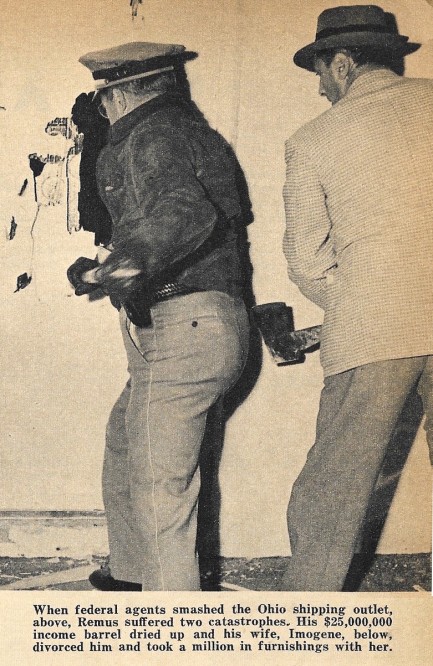 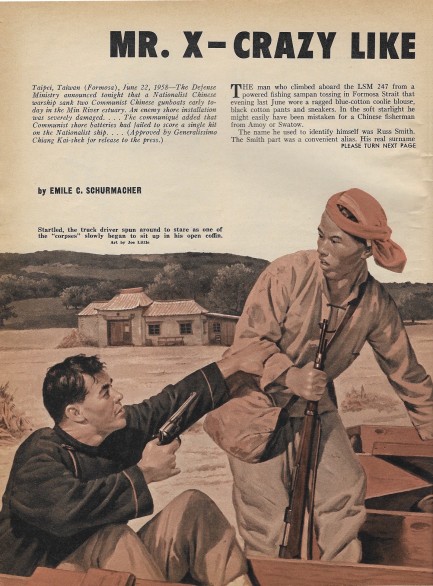 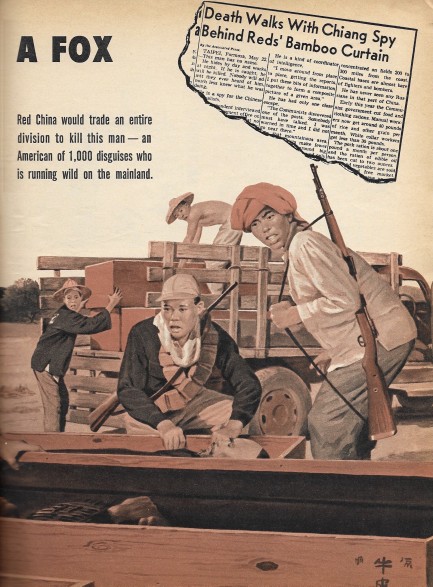 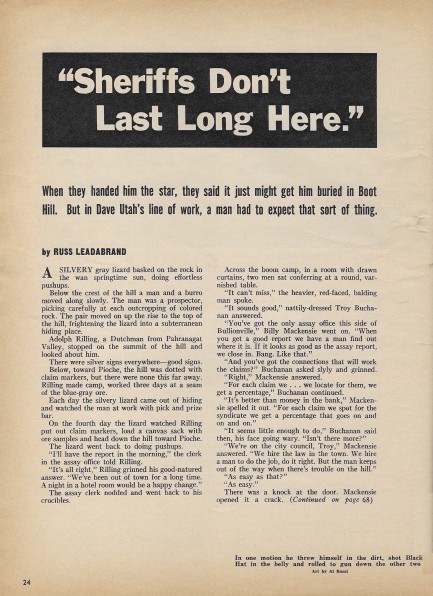 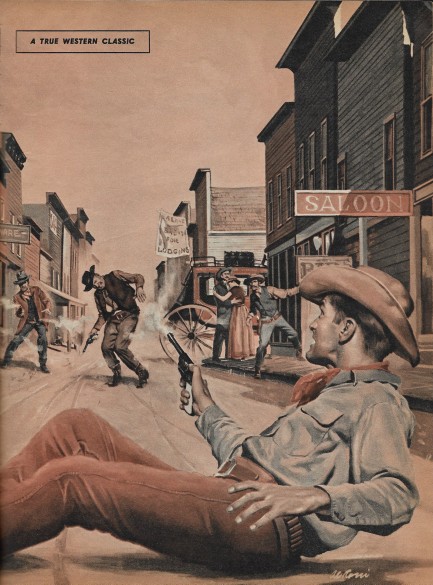 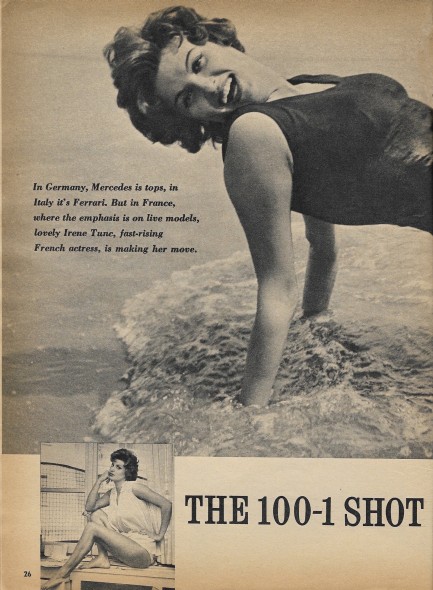 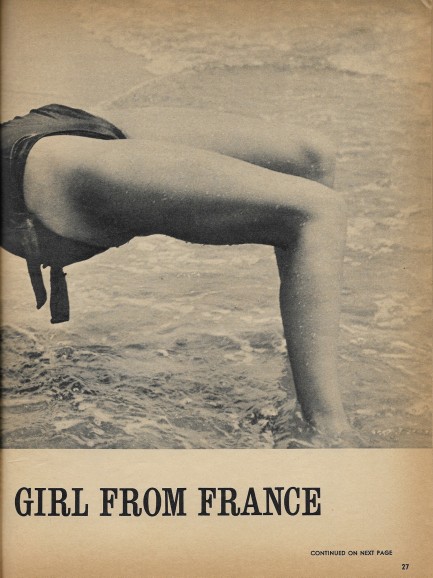 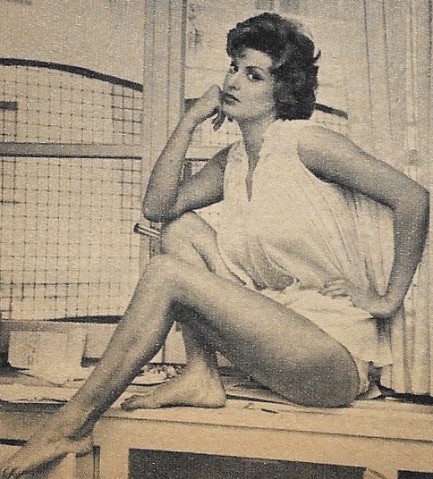 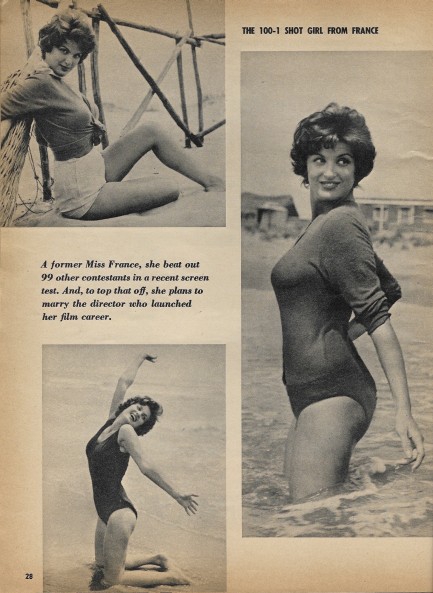 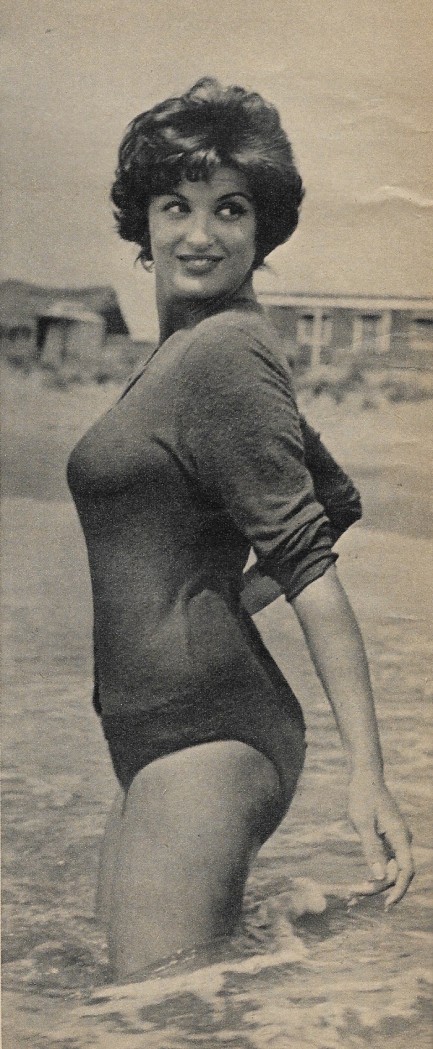 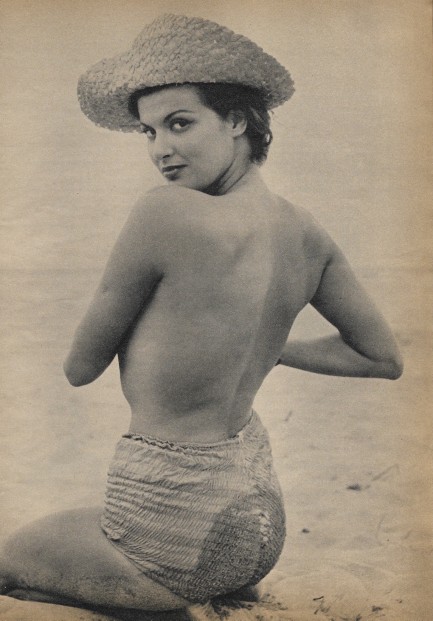 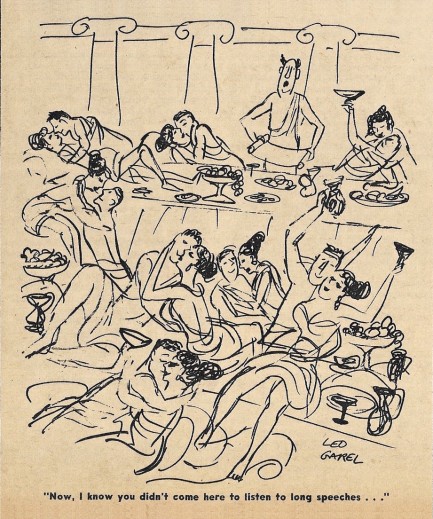 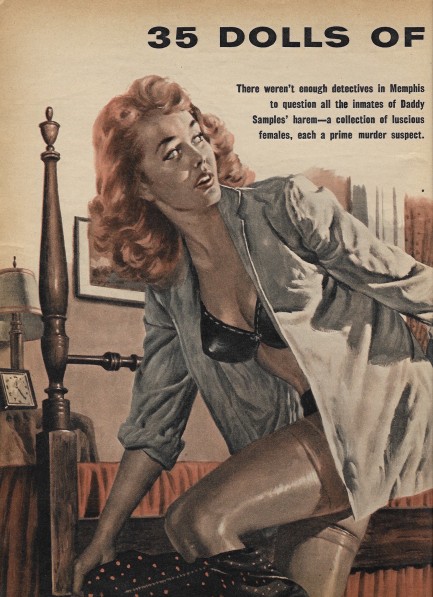 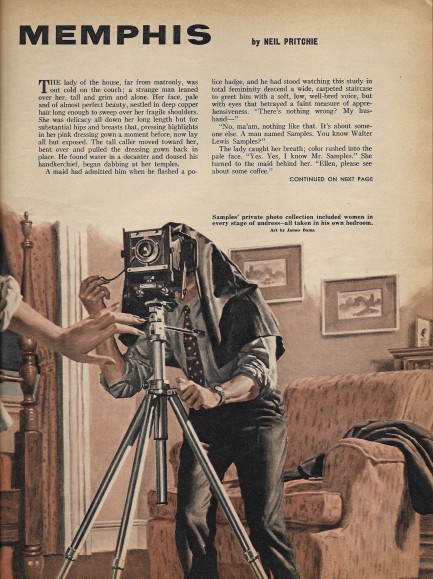 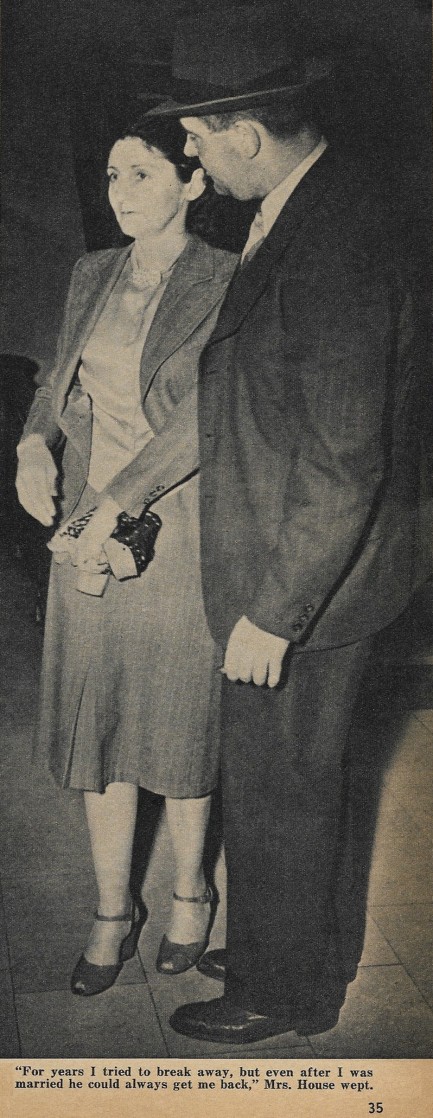 
 Southeast Asia escape epic features murder, sex and everything between. 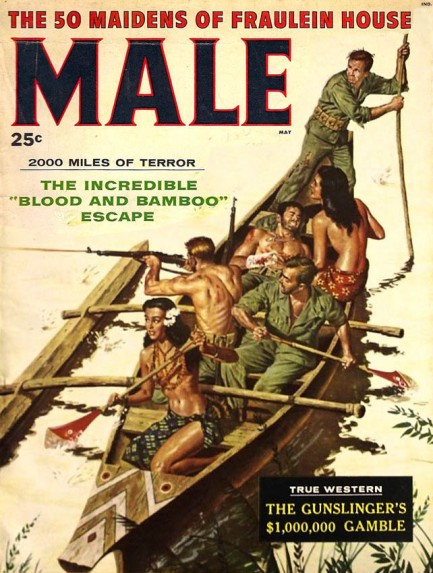
This issue of Male magazine published this month in 1958 features James Bama cover art illustrating Richard Farrington's story “The Incredible 'Blood and Bamboo' Escape,” which is the true tale of Dutchman Klaus van Tronk's flight from a Japanese internment camp in Malaysia during World War II. The story is a book-length special, and one of the more harrowing and interesting details involves one of the prisoners being tied spread-eagled on a bamboo mat elevated six inches above the ground. Beneath the mat were living bamboo shoots. As Farrington tells it (via van Tronk's account), “The shoots are tough, the tips as sharp as honed steel, and they can push through a plank floor [two inches thick]. They grow rapidly in the Pacific sun, about six inches on a good hot day. It had been a hot day.” When van Tronk's work detail came back that evening from a long grind of slave labor in the jungle the bound man already had bamboo shoots growing through his chest, and was still alive, screaming.
We did a verification check on this arcane torture and found that no cases confirmed to scholarly standards exist, but that it is well known in Asia, and experiments on substances approximating the density of human flesh have shown that it would work. As little as forty-eight hours would be needed to penetrate an entire body. Fascinating stuff, but what you really want to know in terms of veracity is whether scantily clad women helped the escapees paddle to freedom like in Bama's cover art, right? Well, this depiction is actually a completely accurate representation of what van Tronk described, or at least what biographer Farrington claims van Tronk described. The women were the daughters of a sympathetic Malay farmer, and indeed they wore virtually nothing, and were considered quite beautiful by the prisoners, save for the minor detail of having red teeth from the local tradition of chewing betel nuts.
The risk taken by these women was extraordinary. Other women who had helped van Tronk and his companions during their months-long odyssey were tortured and raped, and at one point a village was machine-gunned. Why would these Malays take up the foreigners' cause if the risks were so high? Van Tronk attributes it to a cultural requirement to help strangers in need, but we'd note that people have taken these sorts of risks everywhere, cultural norms or no. Often the suffering of others simply brings out the best in people. A historical check on Klaus van Tronk turned up nothing, though, so maybe the entire true story is a piece of fiction. If so, it's a very good one. We have some scans below with art by John Kuller, Joe Little, Al Rossi, Mort Kunstler, and Bruce Minney, and more issues of Male magazine at the keywords. 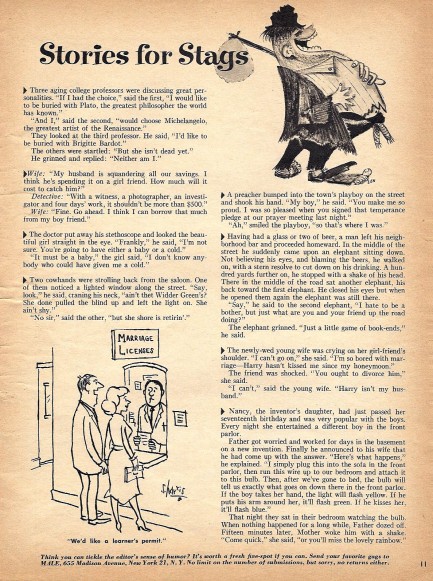 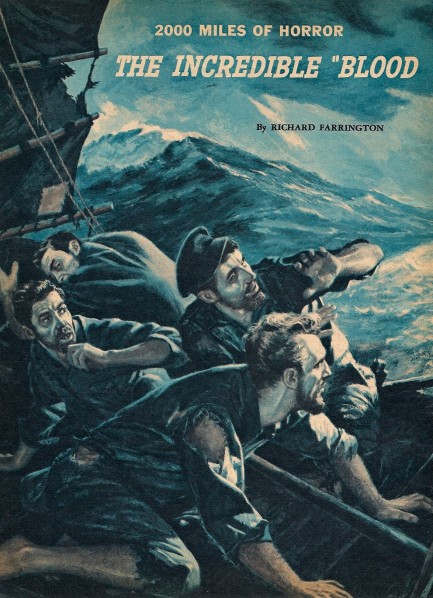 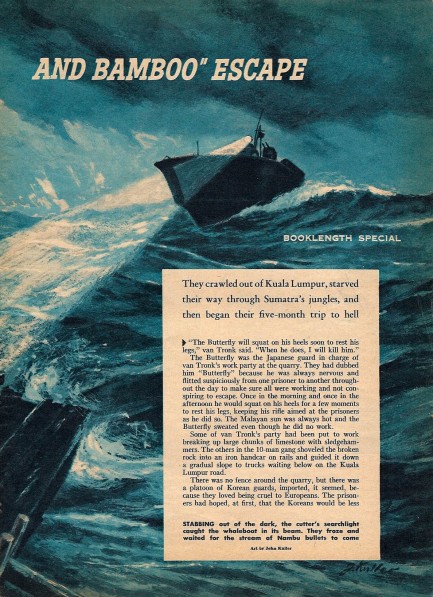 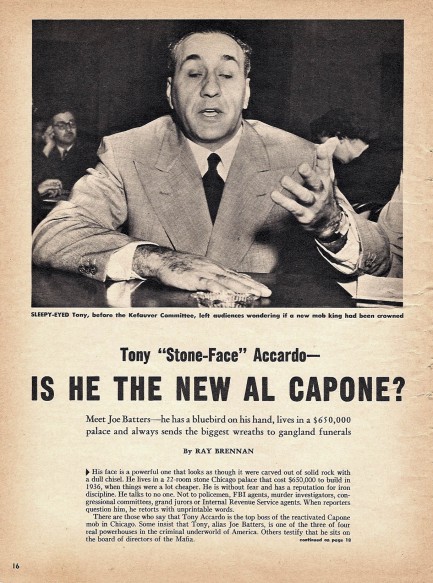 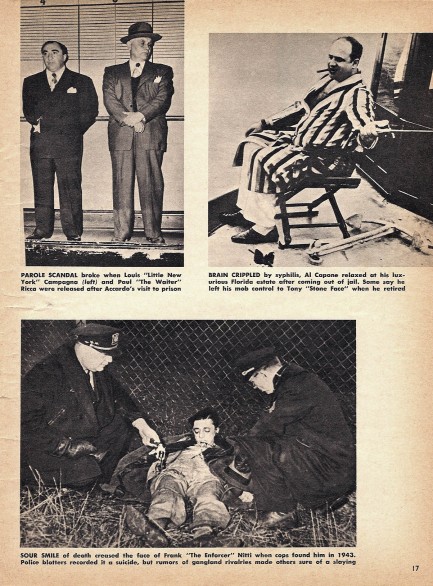  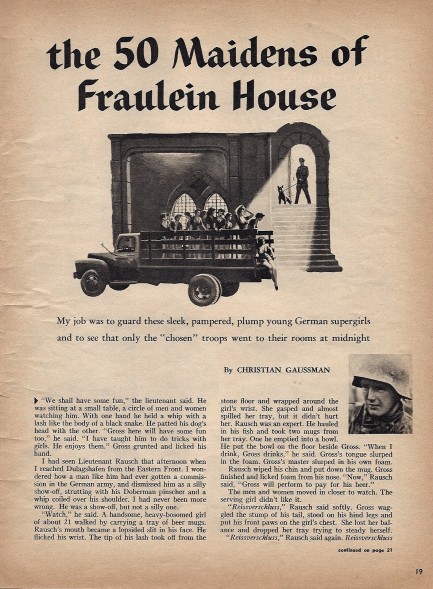 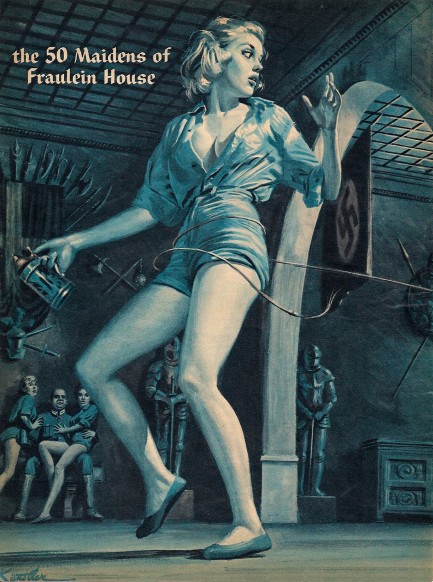  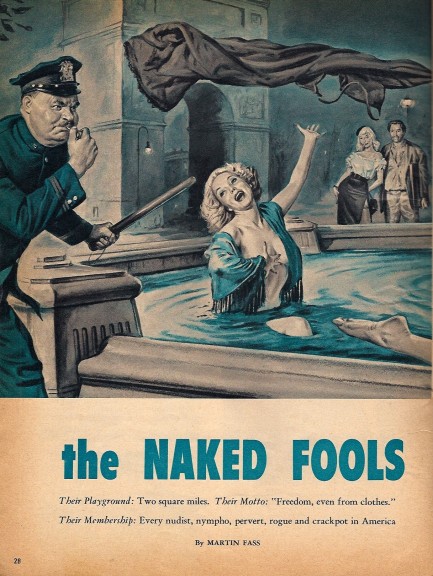 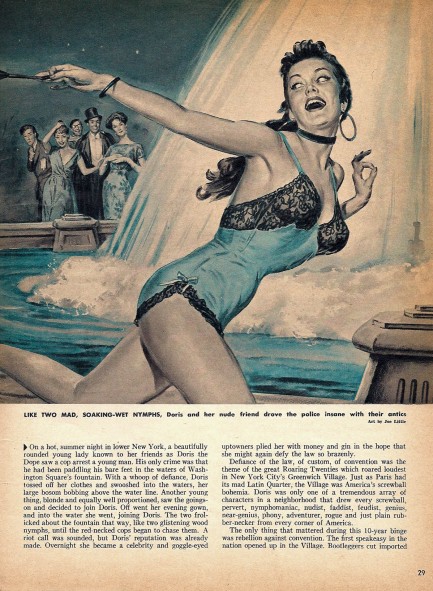 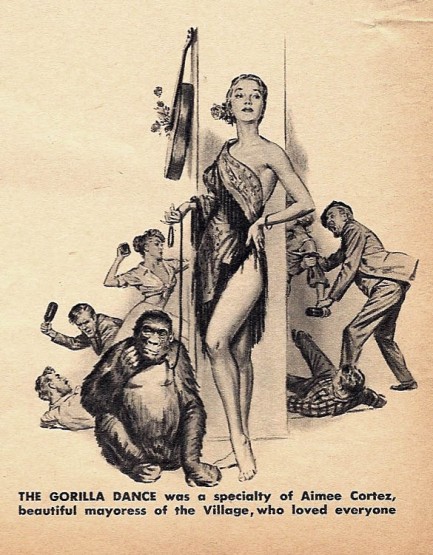 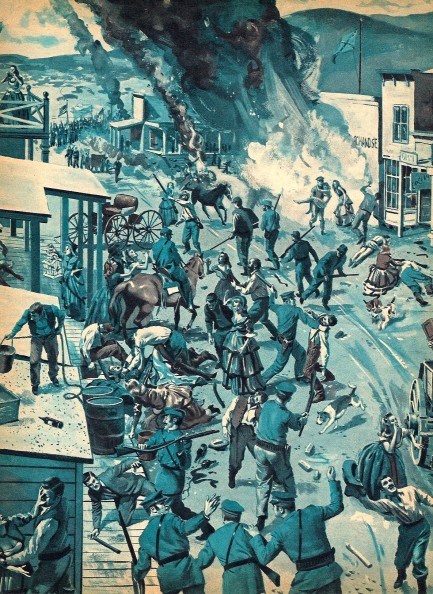 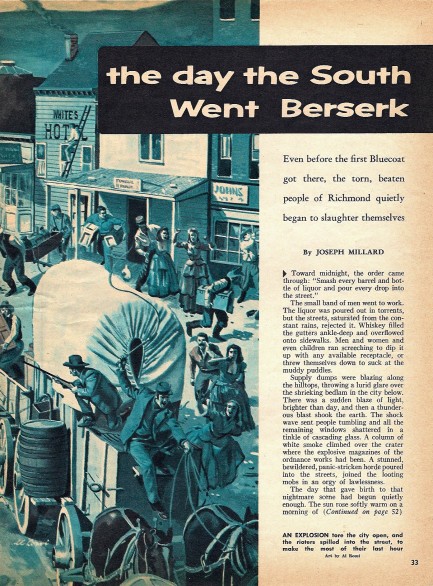 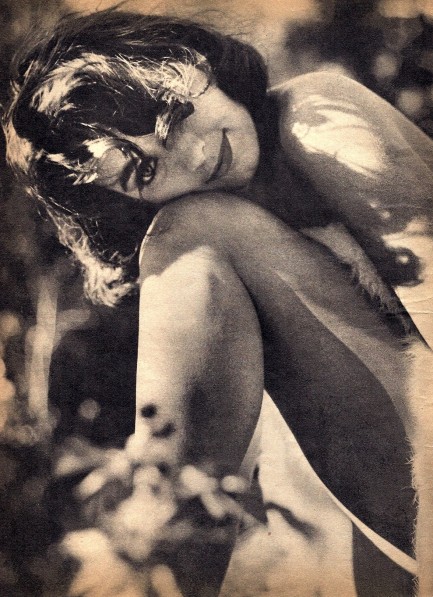 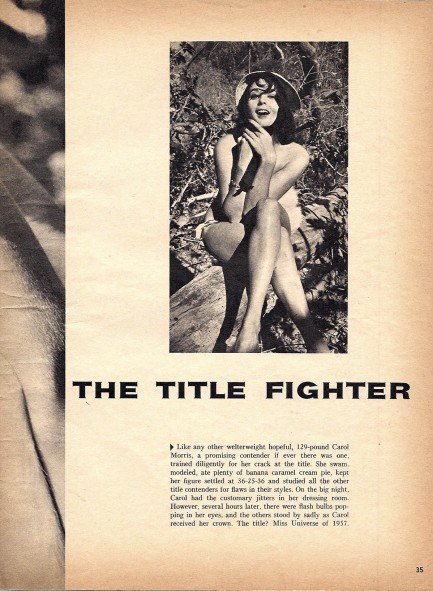 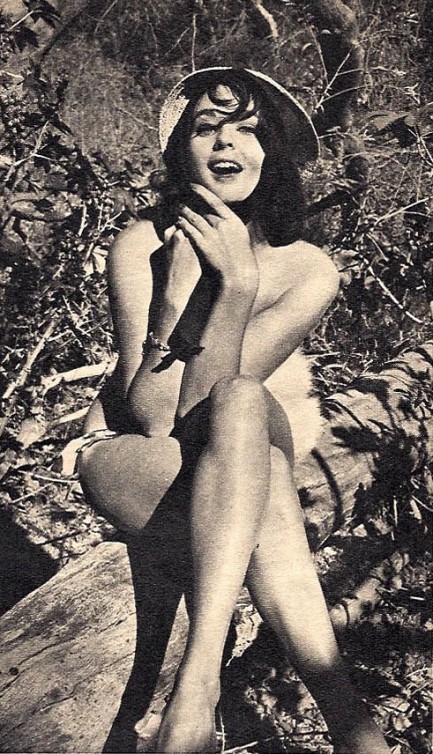 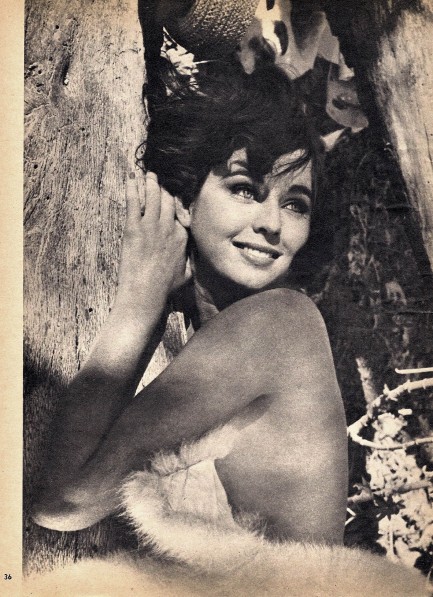 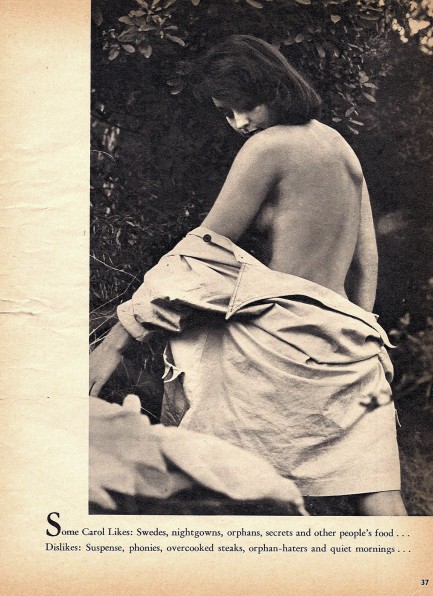 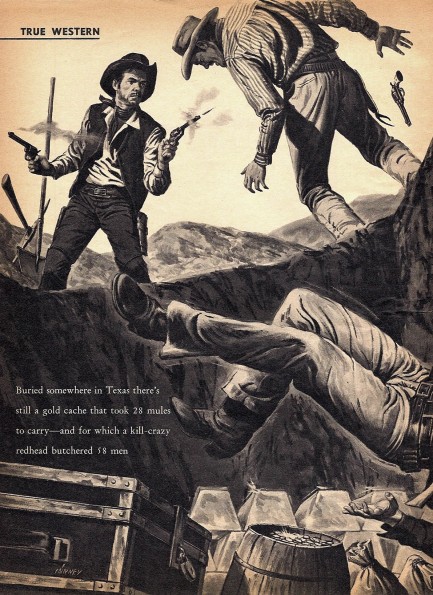 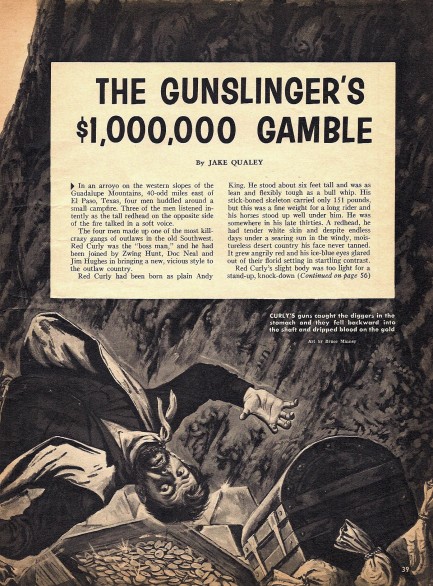 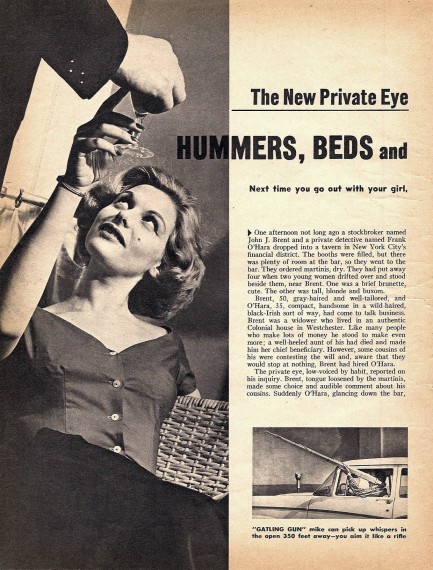 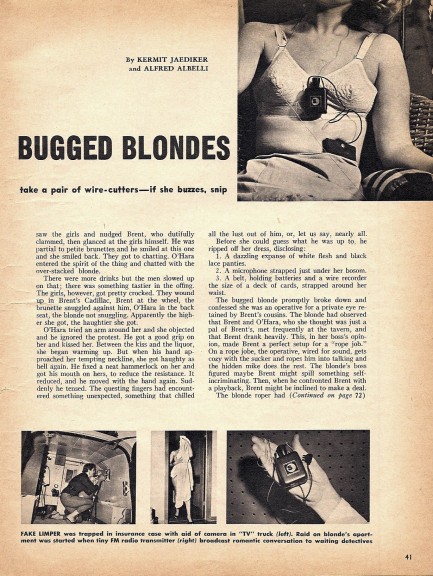 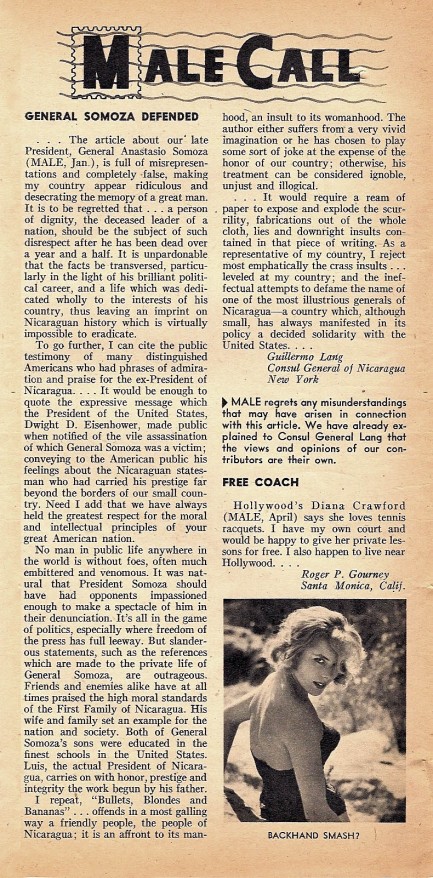
 The Male capacity for violence. 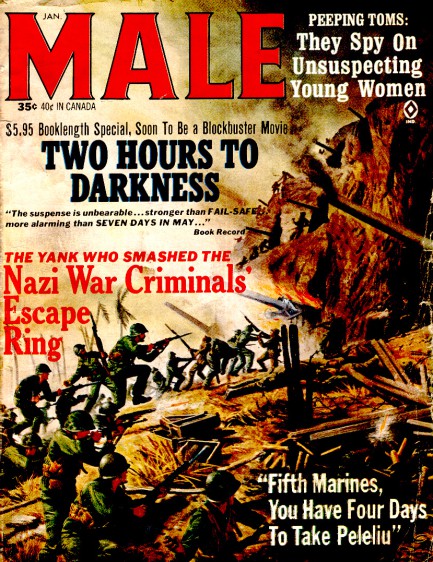
Above is a Mort Kunstler cover for Male painted for the January 1965 issue. Kunstler was famed for his war panoramas, as we’ve discussed before, and if you click his keywords below you’ll see several more martial covers from him that we’ve shared. Inside Male you also get art from Charles Copeland, Samson Pollen, and Gil Cohen. The model feature is Susan Radford, who is described as a starlet but who we’d never heard of. Turns out it wasn’t just us. We checked the usual databases and found no mention of Radford anywhere, so it seems Male editors were premature in dubbing her a major riser. Male focused on all kinds of violent adventures, but especially those dealing with warfare. This issue has four war stories dealing with the Soviet Union, China, and the Nazis, but the most notable entry is South African author Anthony Trew’s gripping Two Hours to Darkness, published here as booklength fiction. The tale is described in the contents as “the nightmarish spine-tingler that will be the movie blockbuster of 1965,” but it looks like Male was wide of the mark again, because no film based on the book was ever released. So Trew had to settle for selling a measly 3.5 million copies of the novel in sixteen languages, the hack. We have a dozen scans below.
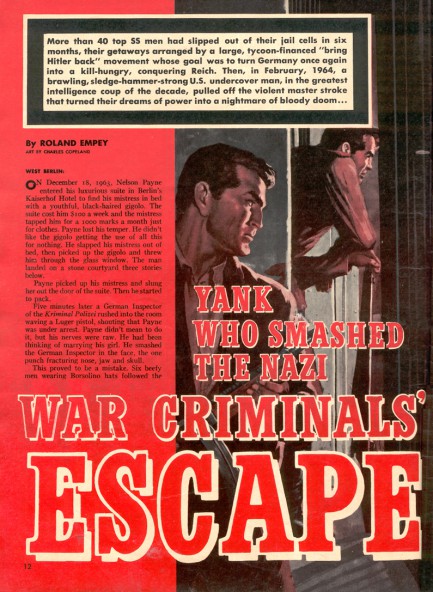 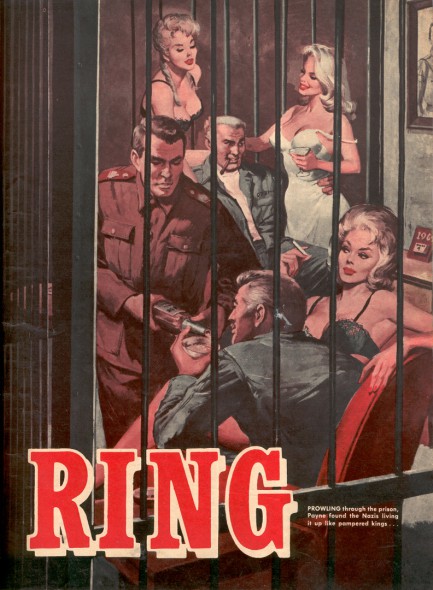 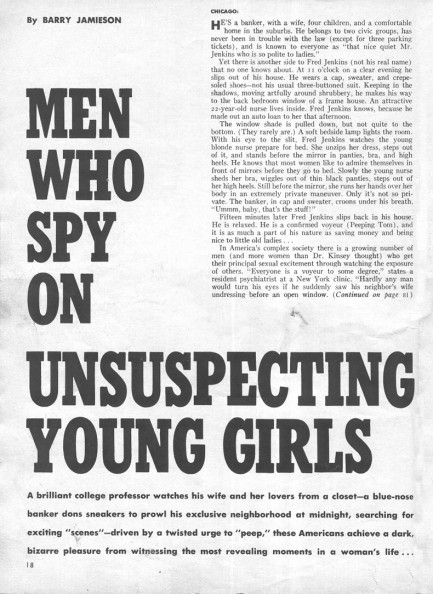 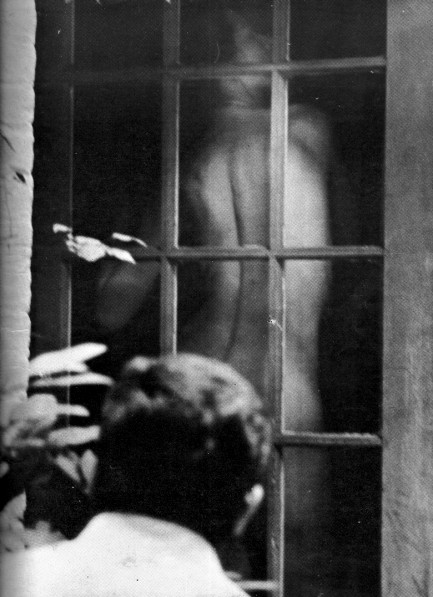 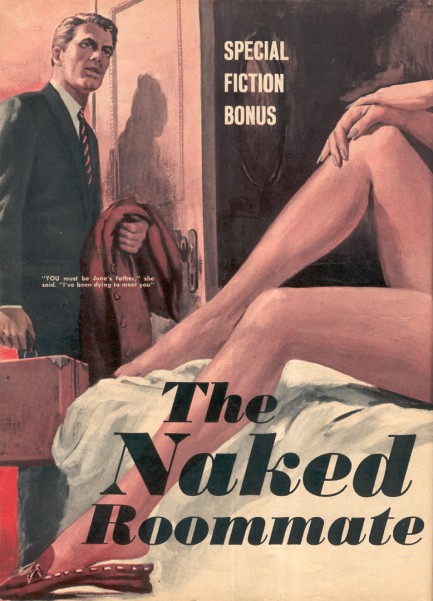 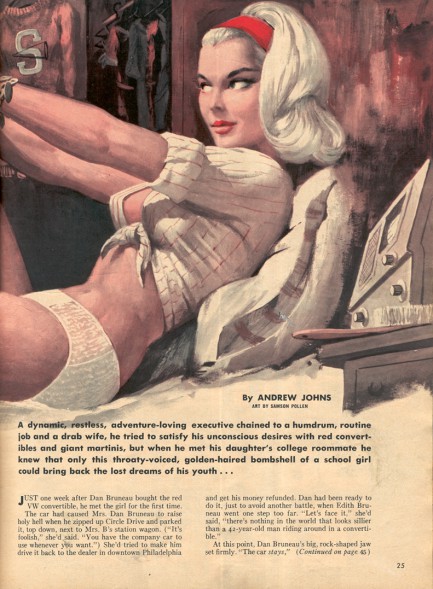 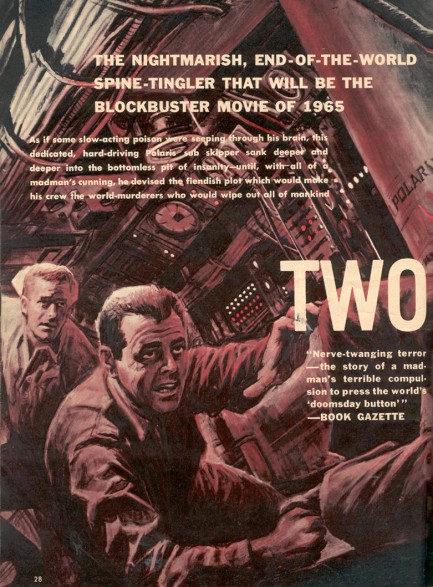 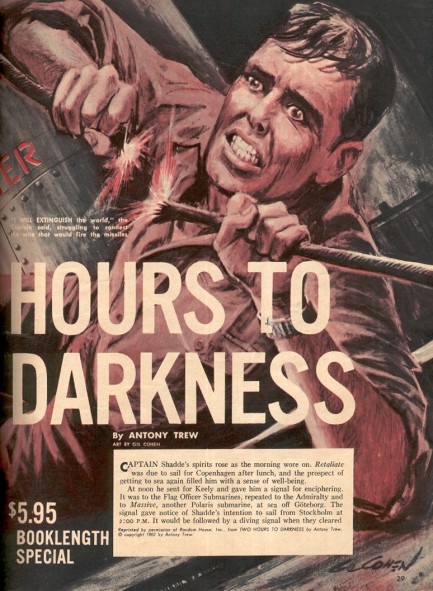 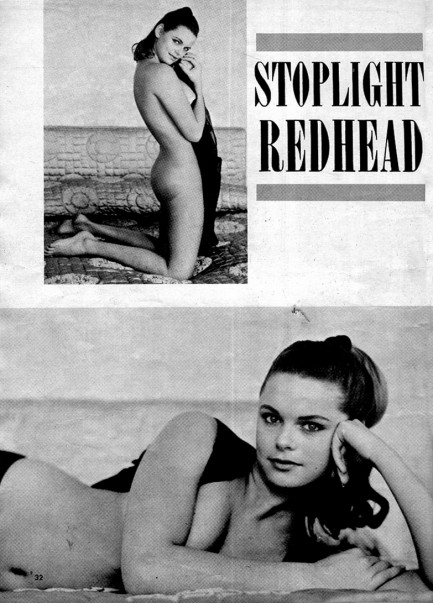 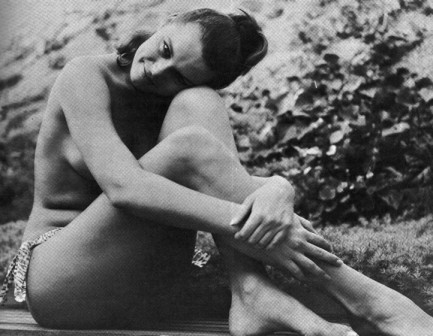

|
 |

The headlines that mattered yesteryear.
2003—Hope Dies
Film legend Bob Hope dies of pneumonia two months after celebrating his 100th birthday. 1945—Churchill Given the Sack
In spite of admiring Winston Churchill as a great wartime leader, Britons elect
Clement Attlee the nation's new prime minister in a sweeping victory for the Labour Party over the Conservatives. 1952—Evita Peron Dies
Eva Duarte de Peron, aka Evita, wife of the president of the Argentine Republic, dies from cancer at age 33. Evita had brought the working classes into a position of political power never witnessed before, but was hated by the nation's powerful military class. She is lain to rest in Milan, Italy in a secret grave under a nun's name, but is eventually returned to Argentina for reburial beside her husband in 1974. 1943—Mussolini Calls It Quits
Italian dictator Benito Mussolini steps down as head of the armed forces and the government. It soon becomes clear that Il Duce did not relinquish power voluntarily, but was forced to resign after former Fascist colleagues turned against him. He is later installed by Germany as leader of the Italian Social Republic in the north of the country, but is killed by partisans in 1945.
|

|
|

It's easy. We have an uploader that makes it a snap. Use it to submit your art, text, header, and subhead. Your post can be funny, serious, or anything in between, as long as it's vintage pulp. You'll get a byline and experience the fleeting pride of free authorship. We'll edit your post for typos, but the rest is up to you. Click here to give us your best shot.

|
|



